Lenovo has unveiled the first true Steam Deck alternative with SteamOS... And even an early next-gen Legion Go prototype
The second-gen Legion Go isn't here yet, but the sleek Legion Go S is right around the corner and will have a SteamOS-powered variant.
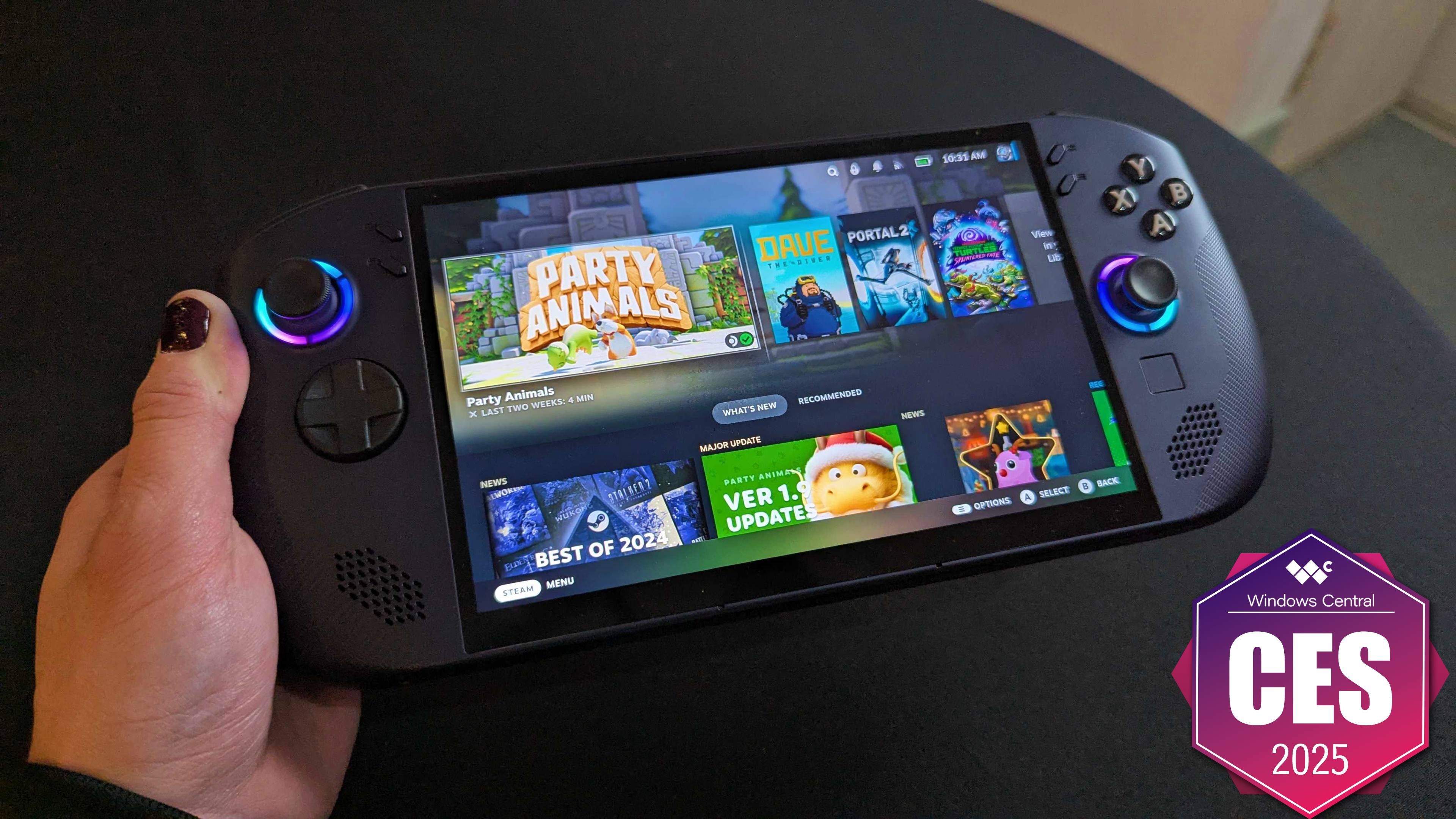
The gaming handheld market has been progressively heating up for a while now, but Lenovo just dropped a firebomb on the whole scene. During CES 2025, Lenovo revealed three new Lenovo Legion handhelds, including the first ever true competitor for Valve's popular Steam Deck and a sneak peek at the next generation of Legion Go gaming.
The Lenovo Legion Go S is a new premium gaming handheld that takes the fight straight to the ASUS ROG Ally with a sleek design, but it doesn't just come with Windows 11. Later this year, gamers will also be able to buy a variant of the Legion Go S running SteamOS, the same specially tailored custom interface currently exclusively used by the Steam Deck. The Legion Go (Gen 2) doesn't have a date yet, but it's coming, too, and it looks great.
I had the opportunity to spend some time with all three handhelds and came away more impressed than I expected with the Go S.
Recent updates
Feb. 12, 2025 — Just dropping into this now that the Lenovo Legion Go S is about to drop to shed some light on this confusing launch. Despite Lenovo's clear messaging in our CES 2025 briefing materials, the Legion Go S does not appear to have an AMD Ryzen Z1 Extreme variant, and even its most expensive $730 launch model is powered by the Ryzen Z2 Go, a significantly less powerful chipset.
A new Legion Go S — with both Windows and SteamOS
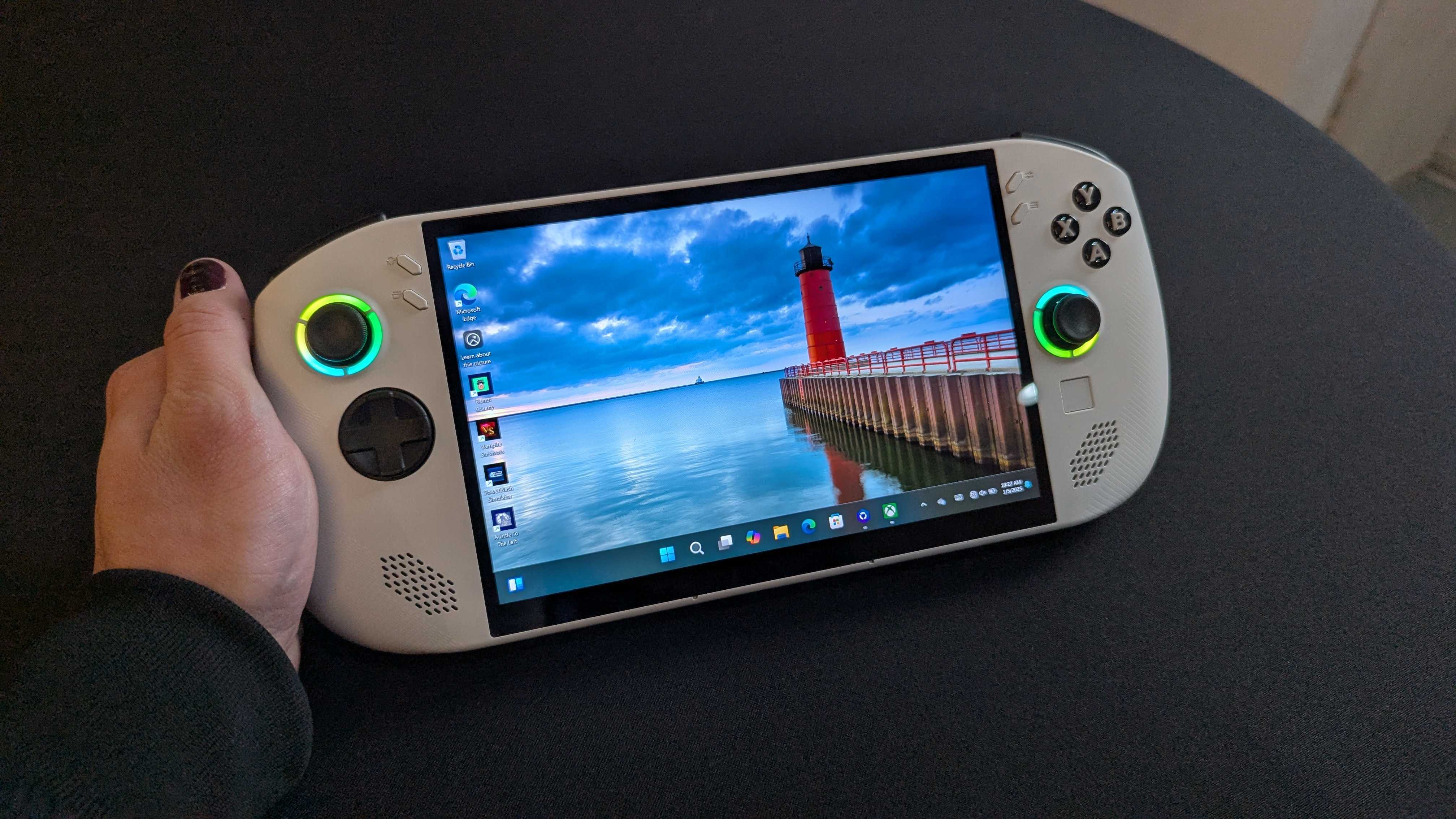
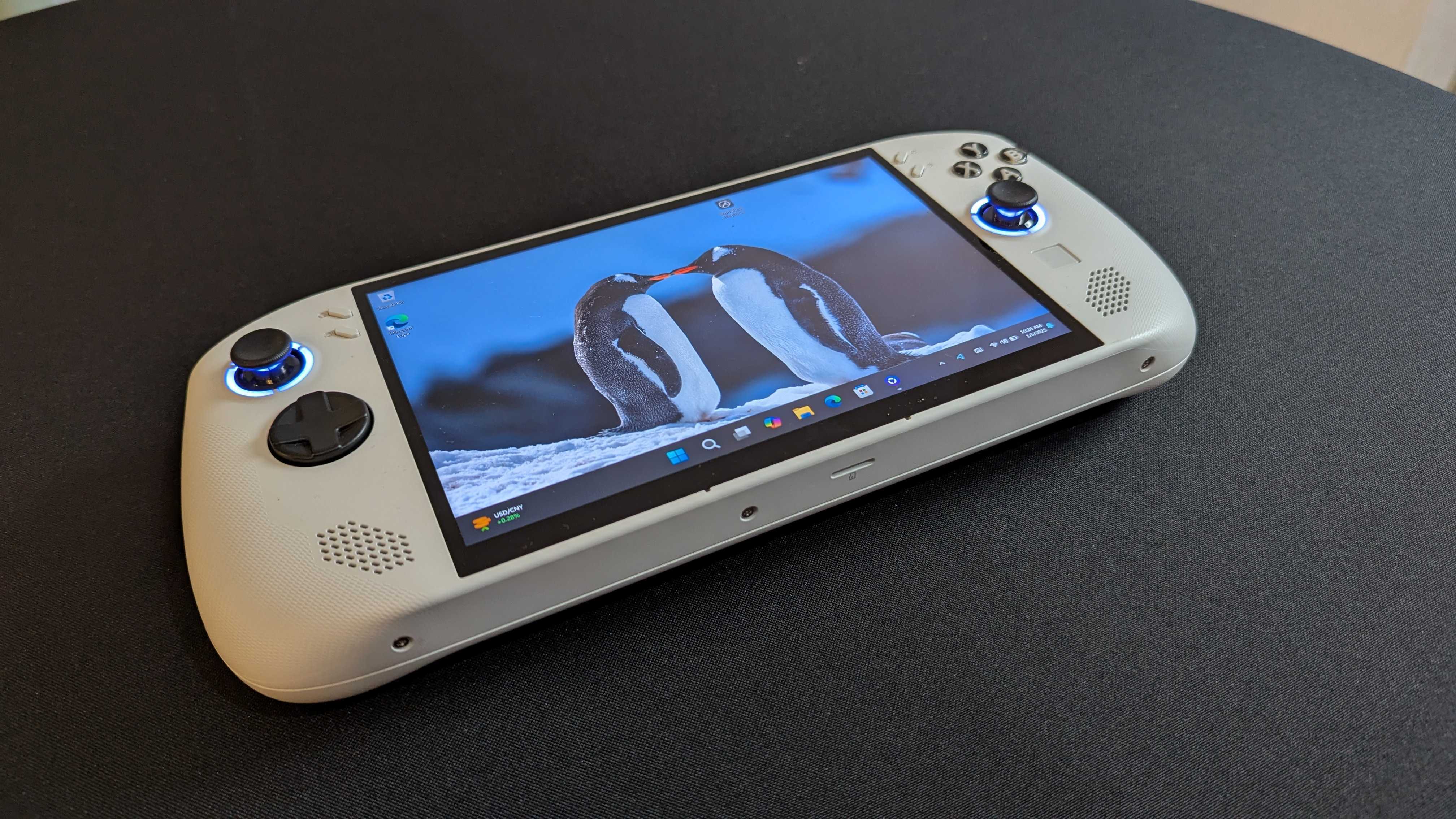
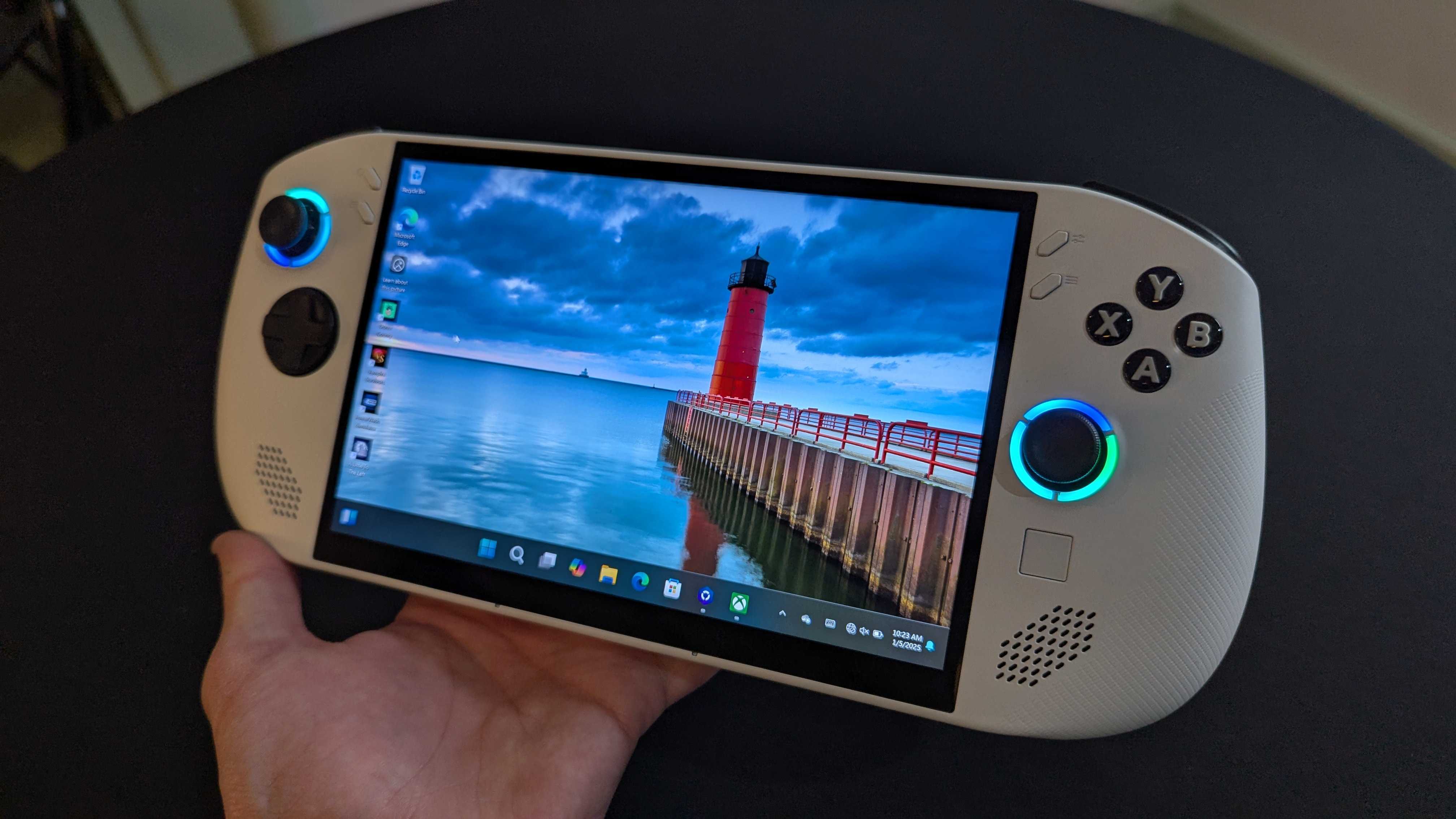
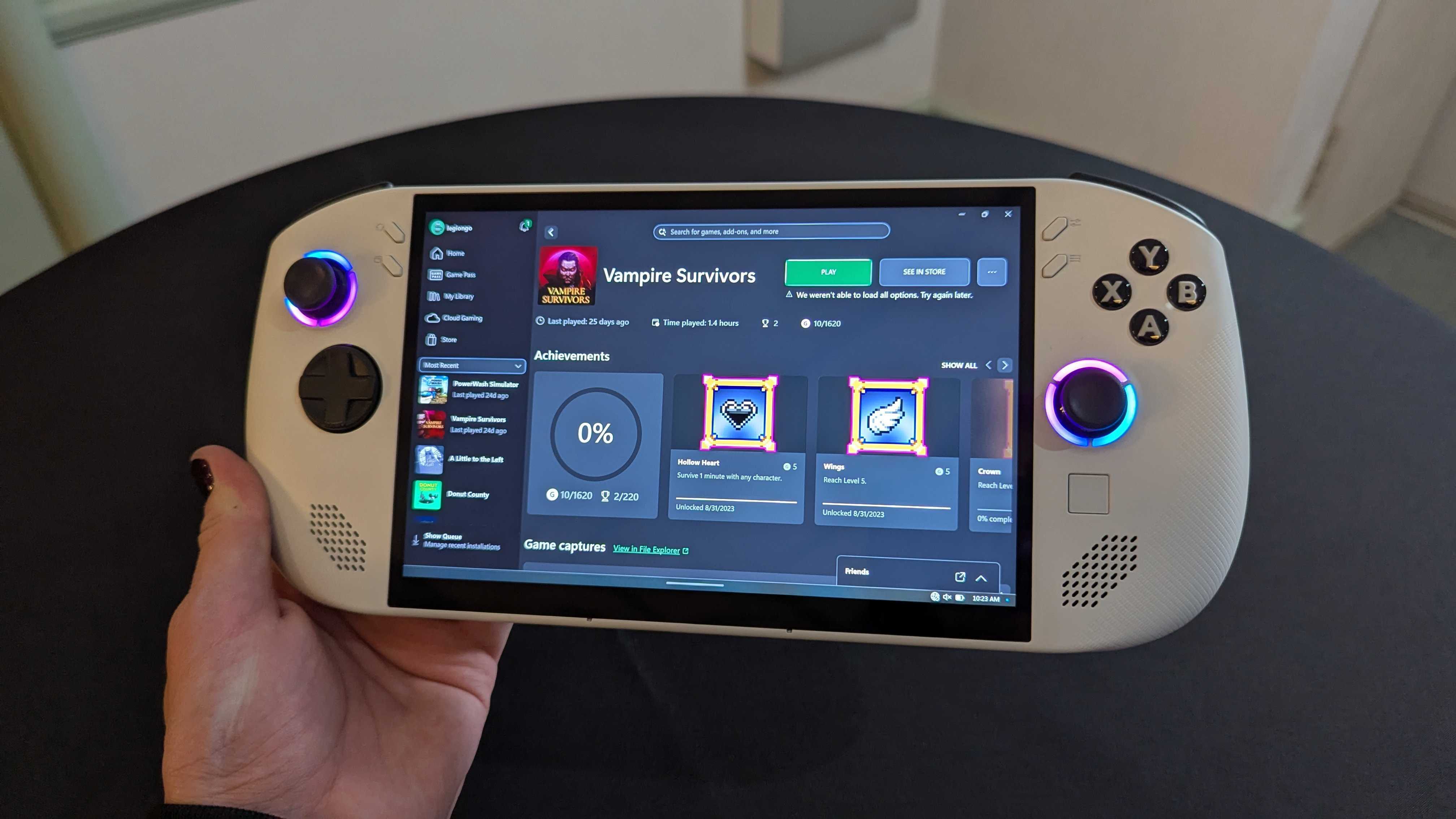
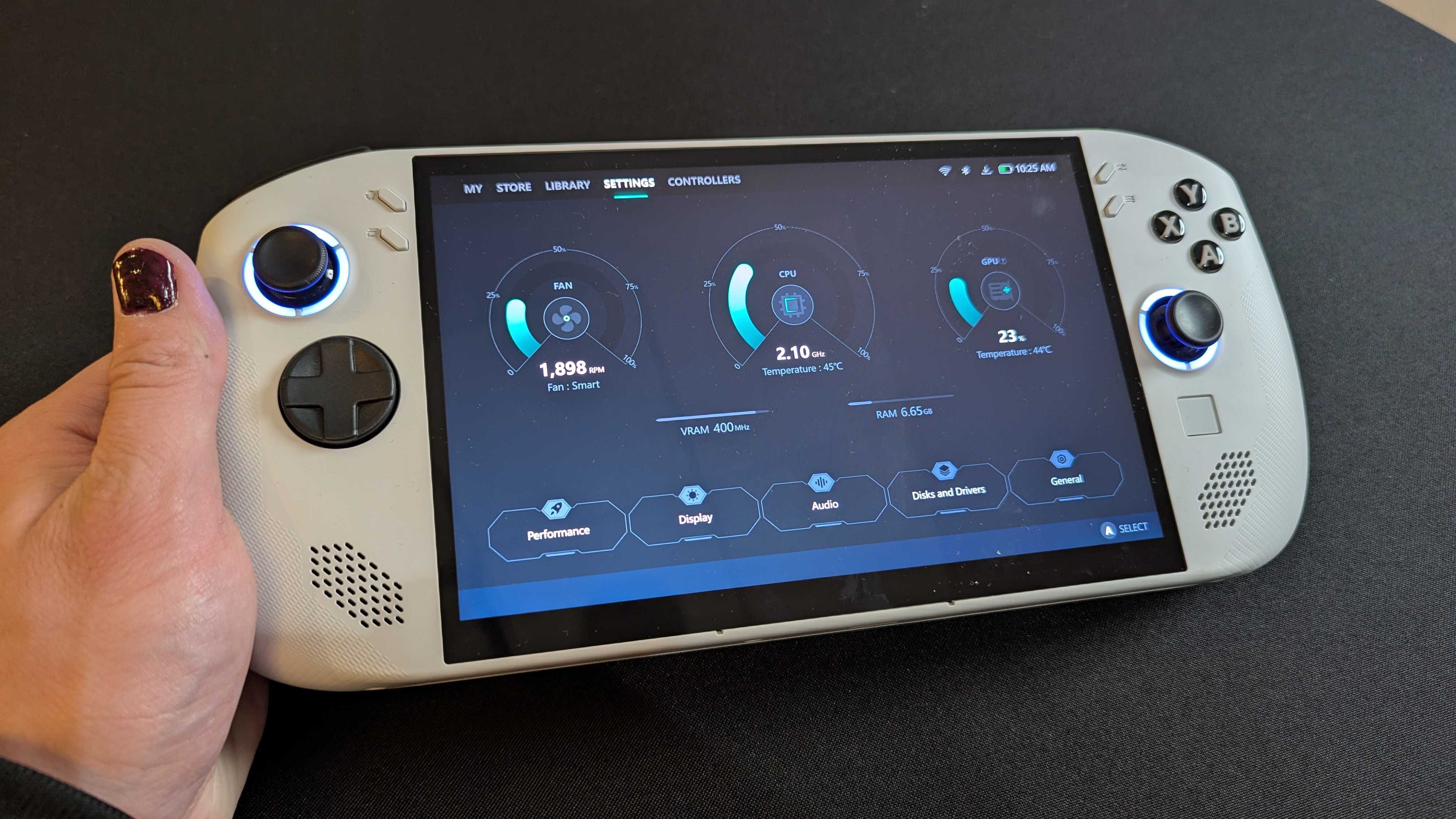
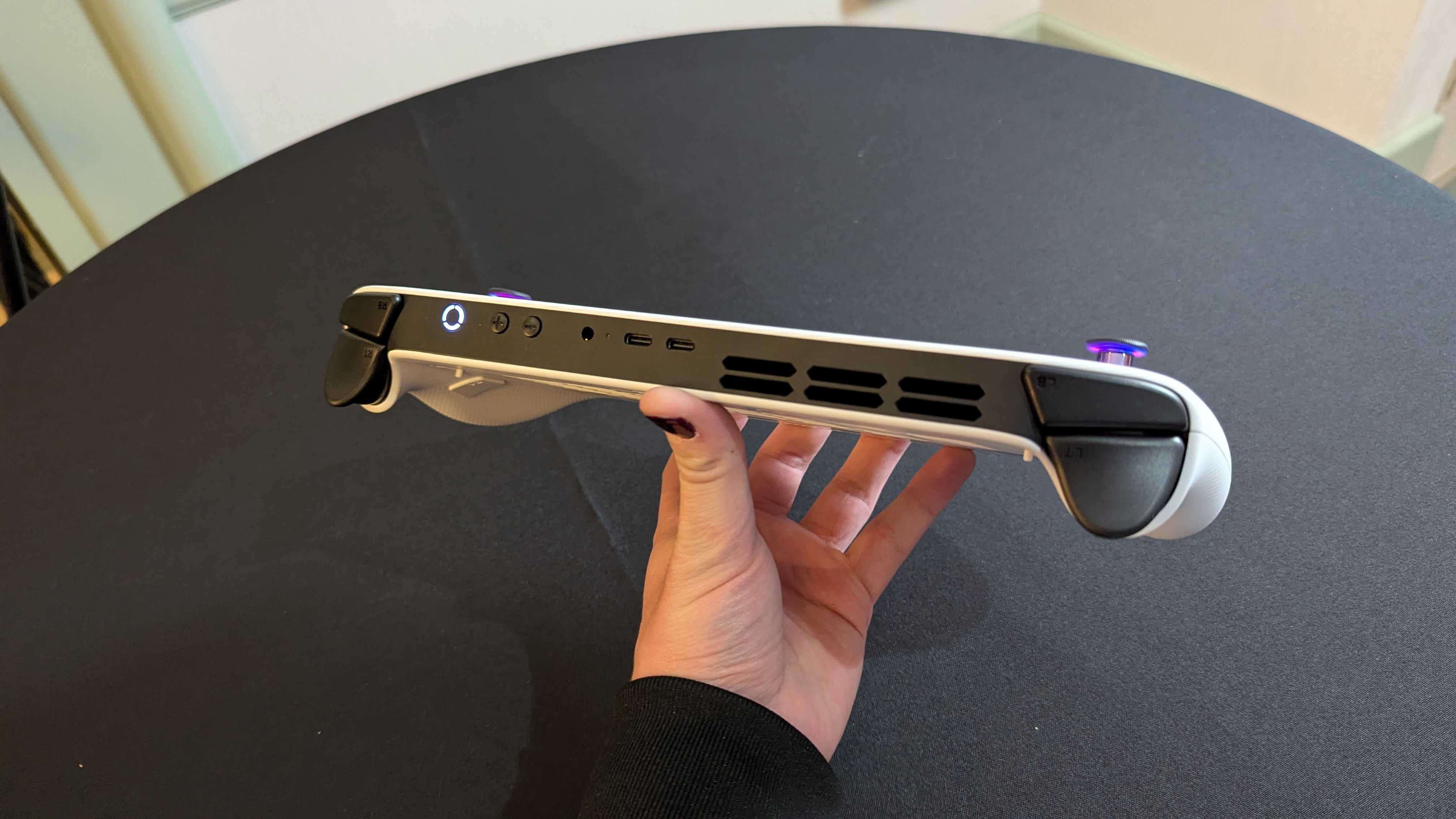
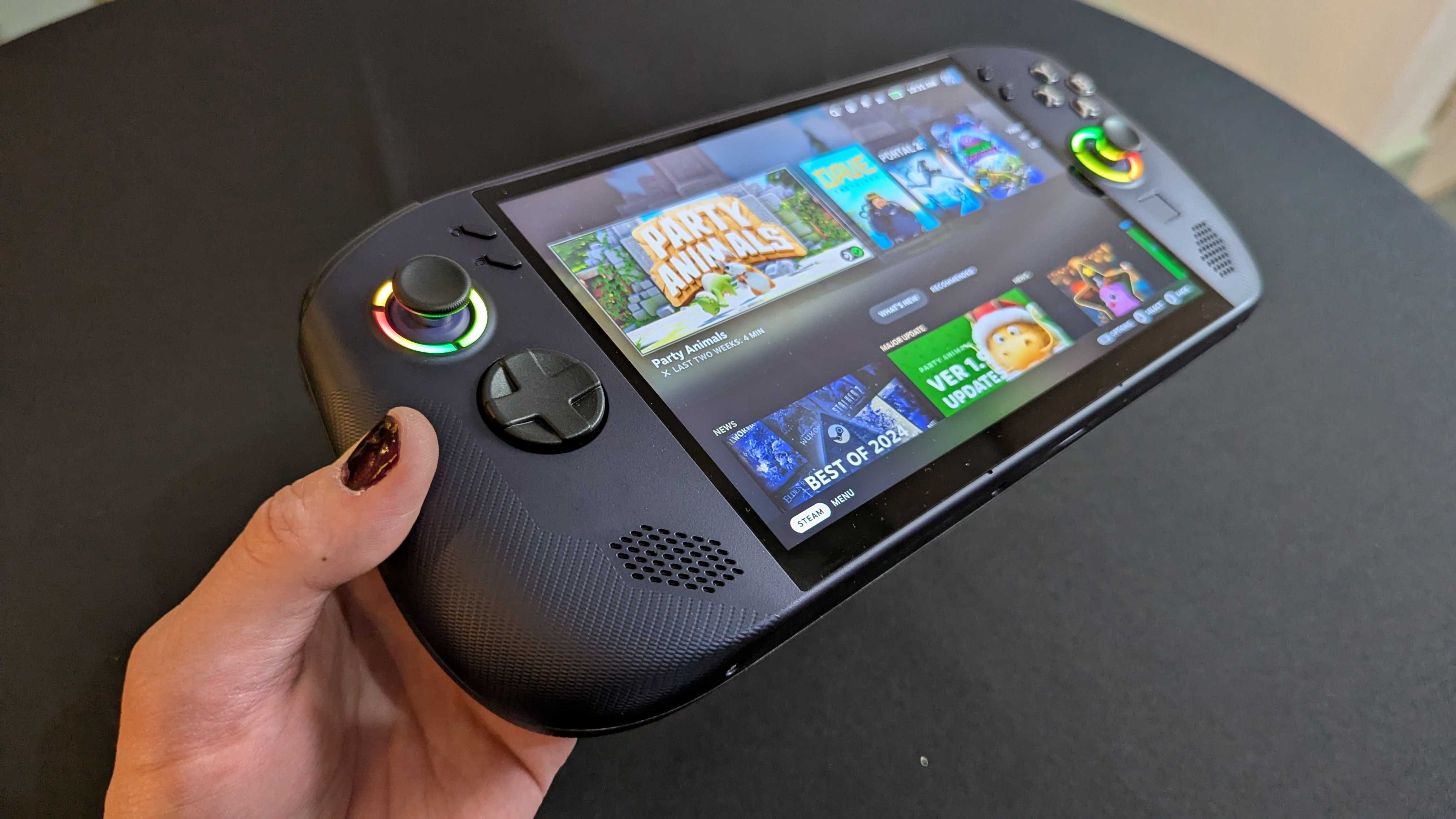
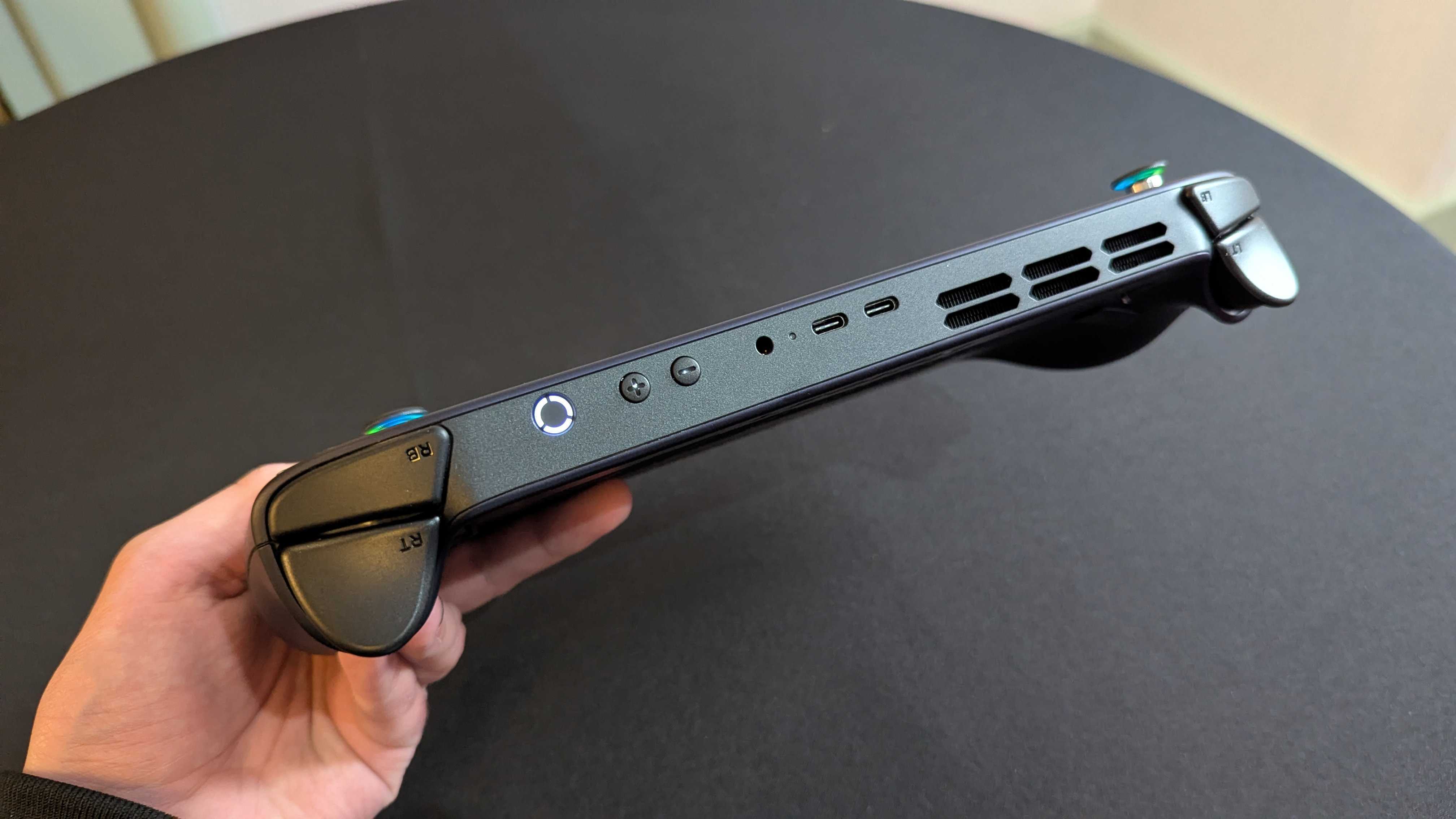
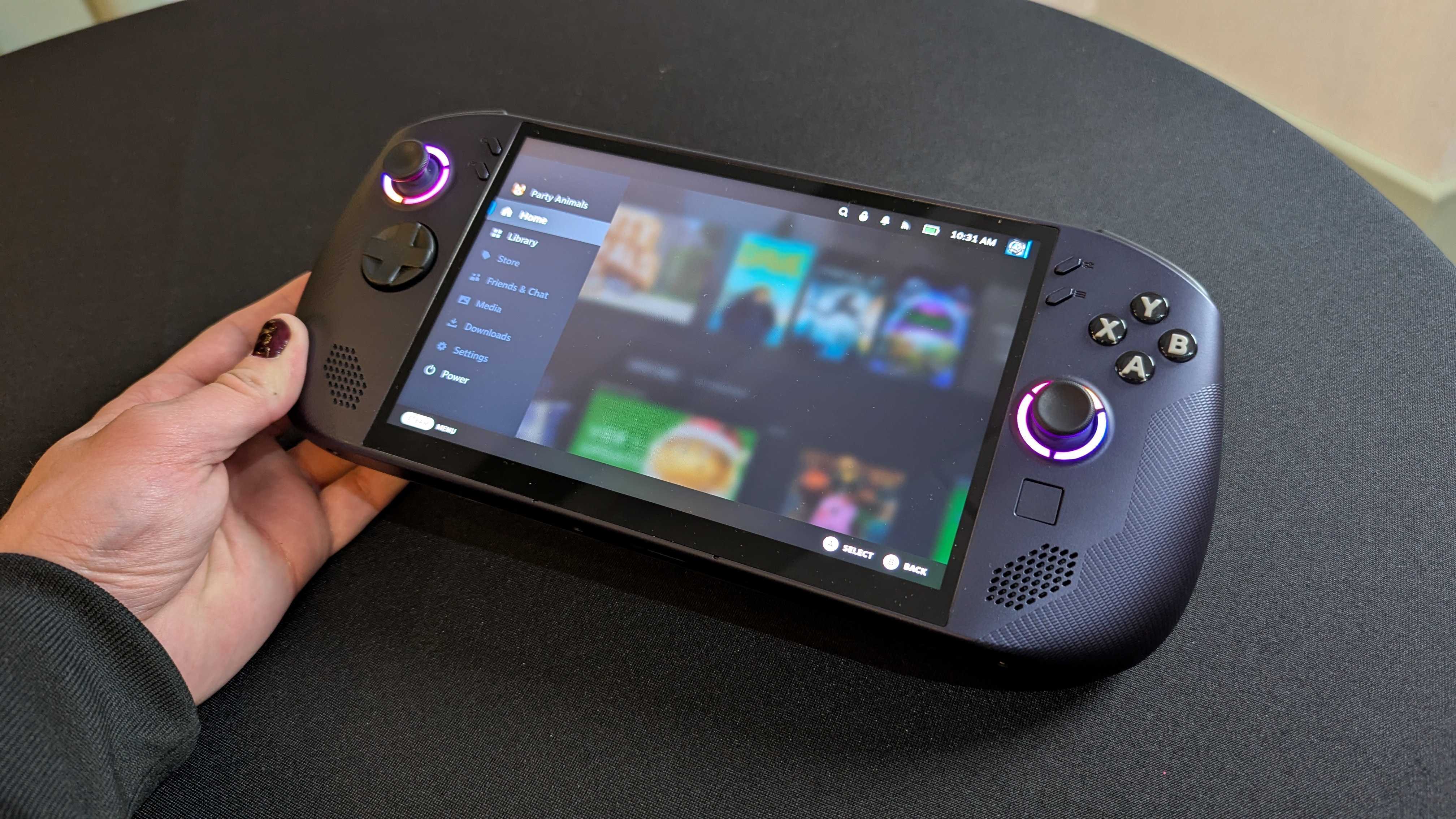
The real star of today's show is the Lenovo Legion Go S, which represents a departure from Lenovo's handheld gaming strategy up until this point. Rather than a utilitarian but highly practical design, the Legion Go S is sleek and clean.
• Price: From $499.99 starting (Ryzen Z2 Go) to $729.99 starting (Ryzen Z1 Extreme)
• Display: 8-inch IPS LCD, 16:10 aspect ratio, FHD+ (1,920 x 1,080) resolution, 120Hz refresh rate, 500nits max brightness, 97% DCI-P3 color gamut, multi-touch support, Variable Refresh Rate (VRR) support
• CPU: AMD Ryzen Z2 Go (4 cores, Zen3+ architecture) | AMD Ryzen Z1 Extreme (8 cores, Zen4 architecture)
• GPU: AMD Radeon 700M series (RDNA 2 for Z2 Go, RDNA 3 for Z1 Extreme)
• RAM: Up to 32GB LPDDR5X @ 6,400MHz
• Storage: Up to 1TB M.2 NVMe PCIe Gen 4.0 SSD (M.2 2242 & 2280 supported)
• Battery: 55.5Whr, 65W USB Type-C fast charging
• Dimensions: 299 x 127.6 x 22.6mm (11.77 x 5.02 x 0.88in)
• Weight: 740g (1.63lbs)
The dual-tone black-and-white design is much closer to the existing ASUS ROG Ally or Steam Deck than the first-gen Legion Go, as the detachable controllers are gone. You're looking at an 8-inch, 16:10 IPS LCD display with a 120Hz refresh rate and multi-touch support, and it does feature Variable Refresh Rate (VRR), a feature strangely missing on the original Go.
On either side, you'll find the new Hall Effect thumbsticks that should be more precise and help combat stick drift, as well as the more circular and ergonomic D-Pad. There are new dual-stage triggers, too, with the trigger locks enabled via switches on the back of the handheld. This handheld is still quite large and heavy compared to some other options, but it's certainly more demure than the beefy Legion Go that came before it.
Oddly enough, I was reminded of the Logitech G Cloud Android handheld I reviewed, but in a good way. The Legion Go S was far more comfortable to hold than I expected, expertly disguising its rather large size in a way that almost defies belief. You still get a built-in touchpad to help navigate Windows, too, although it is tiny (it still works well, from my limited experience).
On the inside, you'll find either the AMD Ryzen Z2 Go, a more affordable chipset designed exclusively for the Legion Go S, or the familiar Ryzen Z1 Extreme we've seen in all the most premium PC gaming handhelds. The Ryzen Z2 Go is expected to offer modest performance but (hopefully) great efficiency and a lower price point. Supporting that chipset will be up to 32GB of RAM and 1TB of SSD storage, which is still swappable.
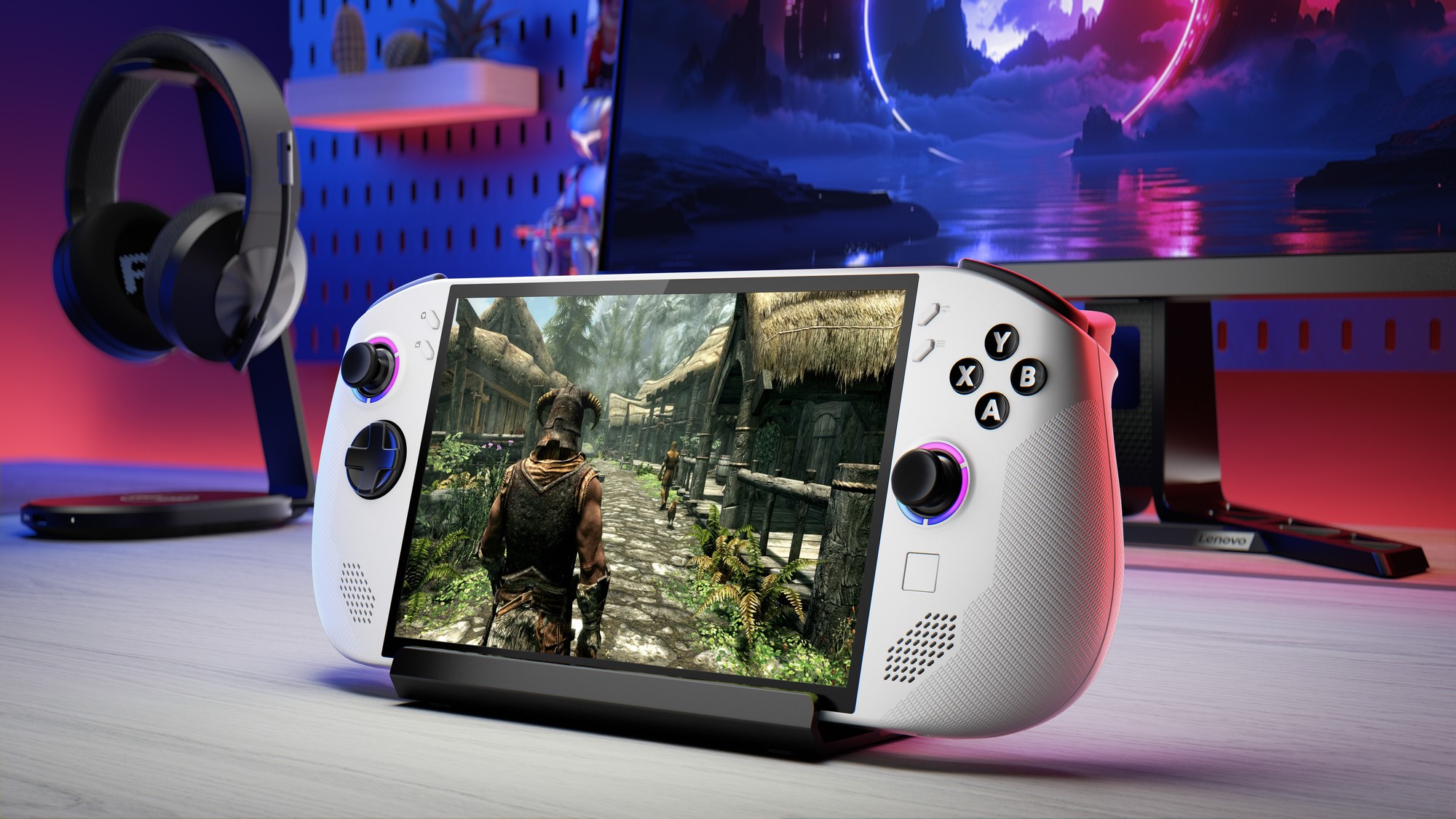
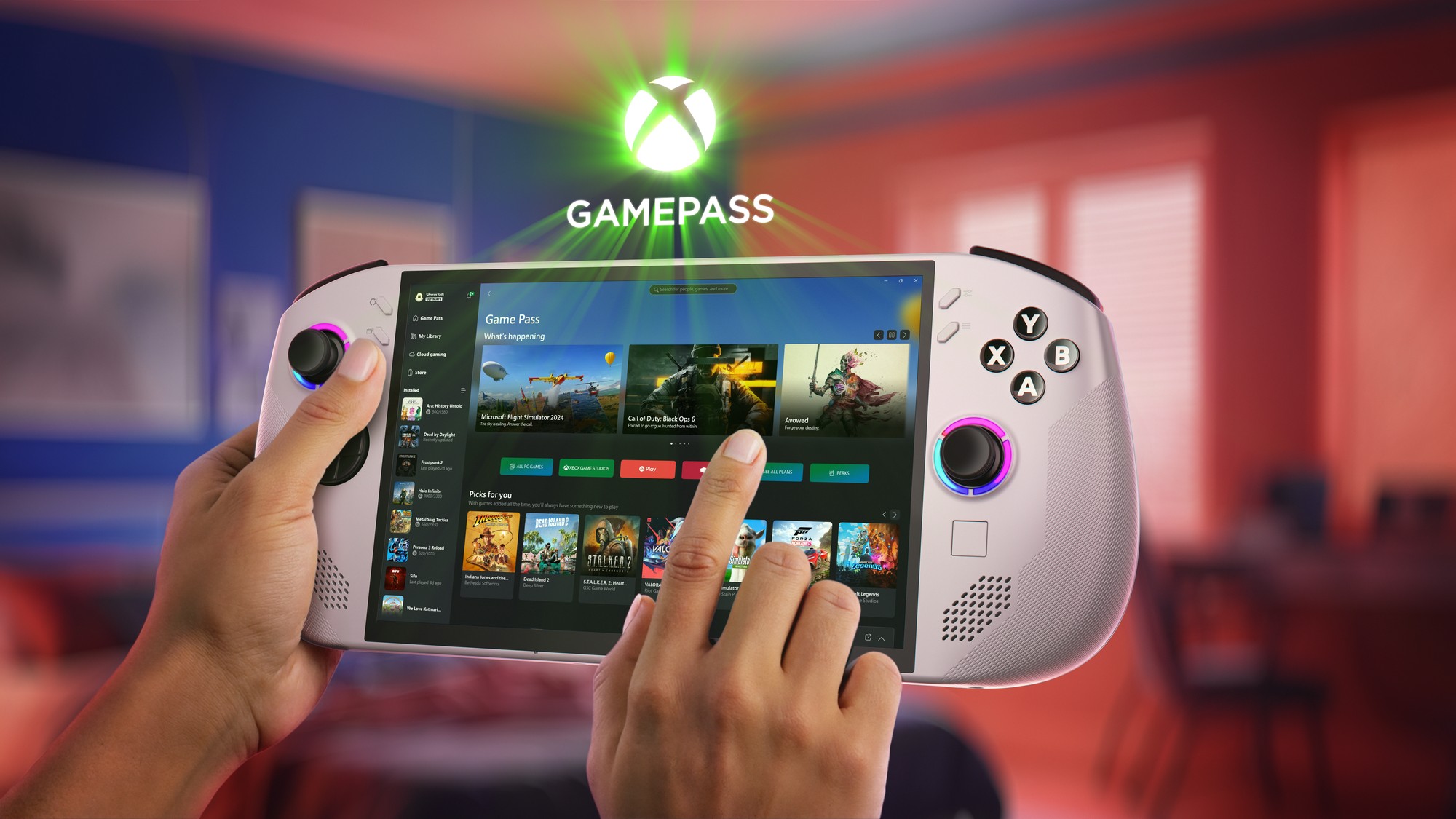
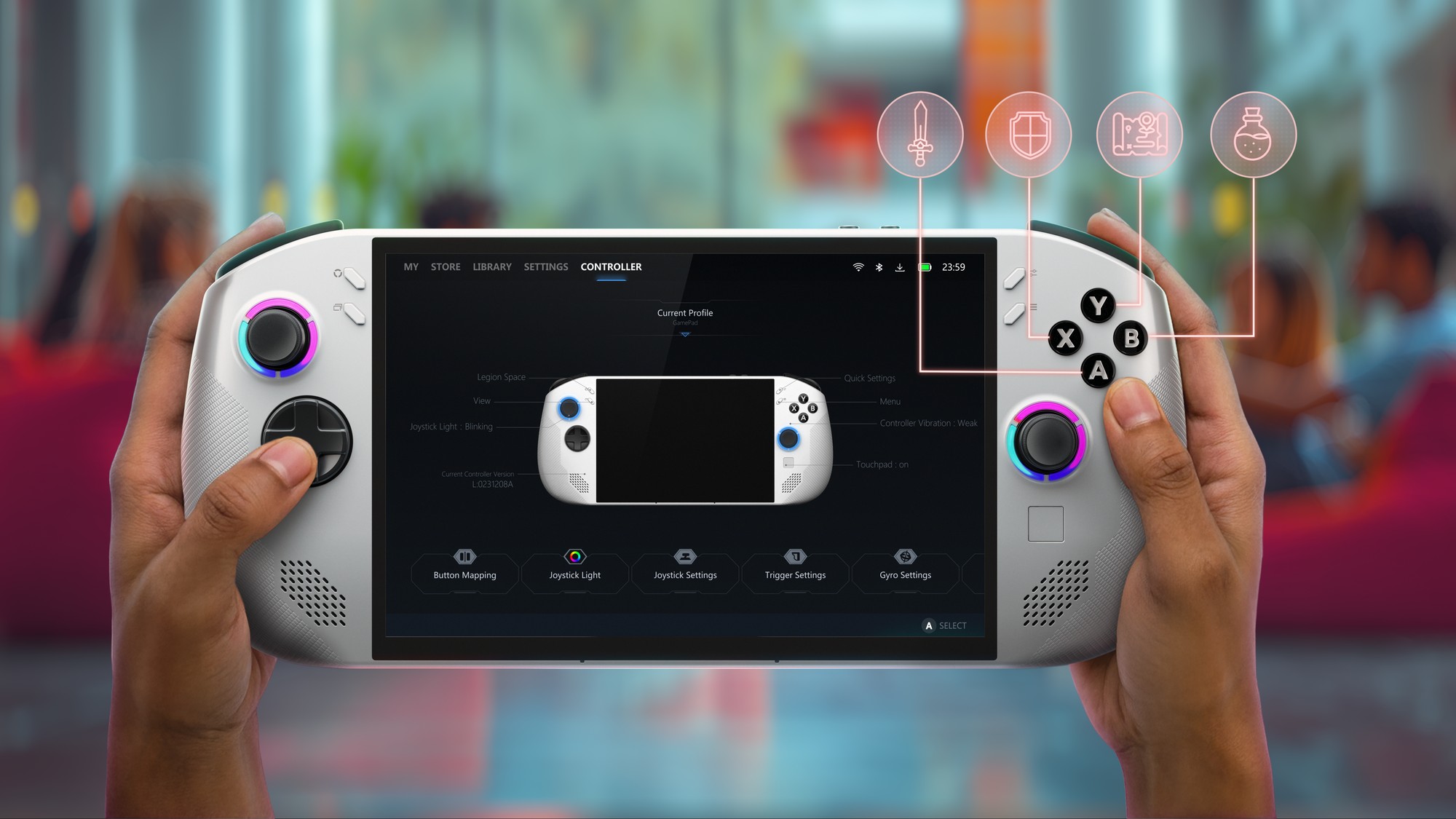
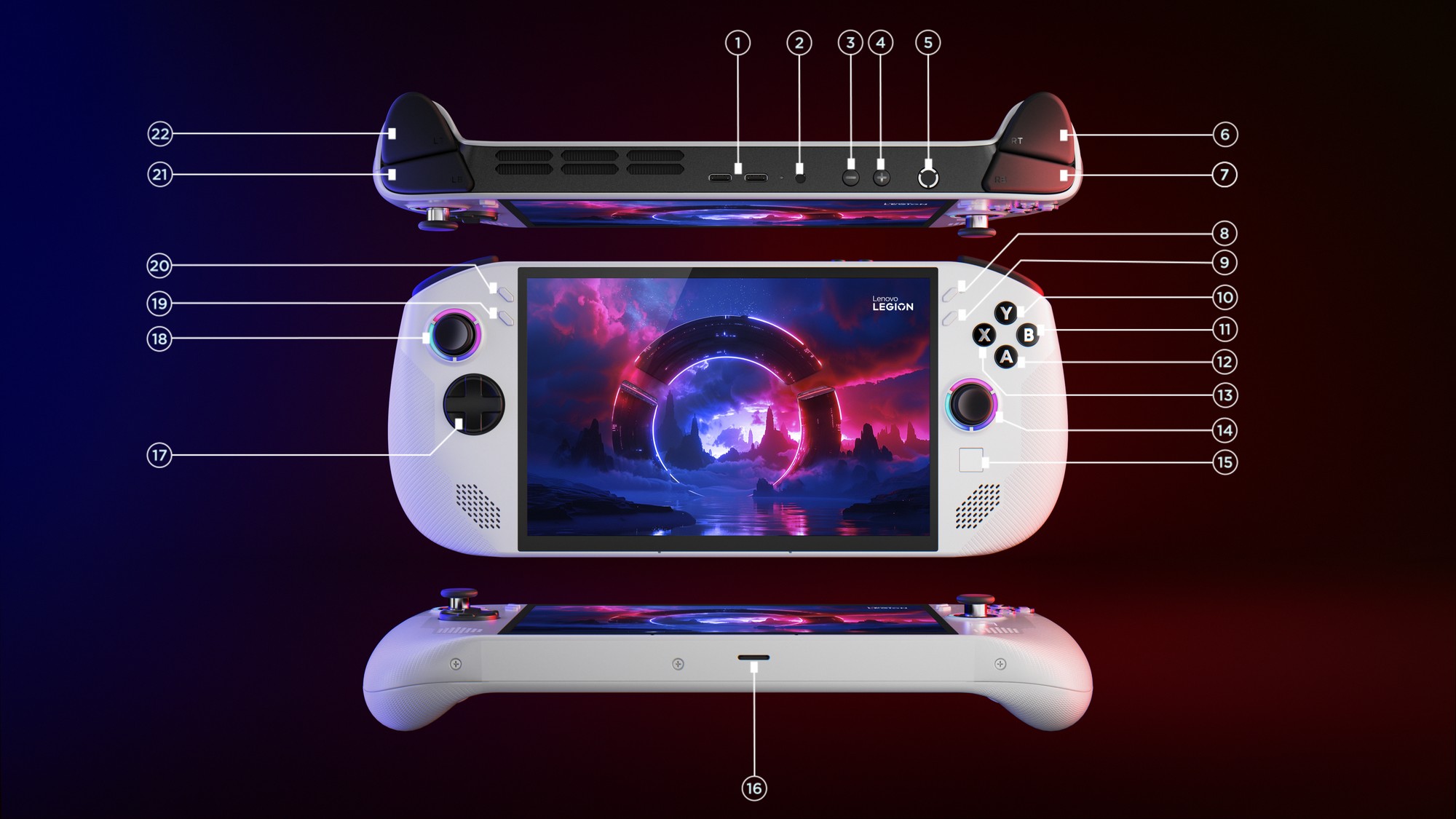
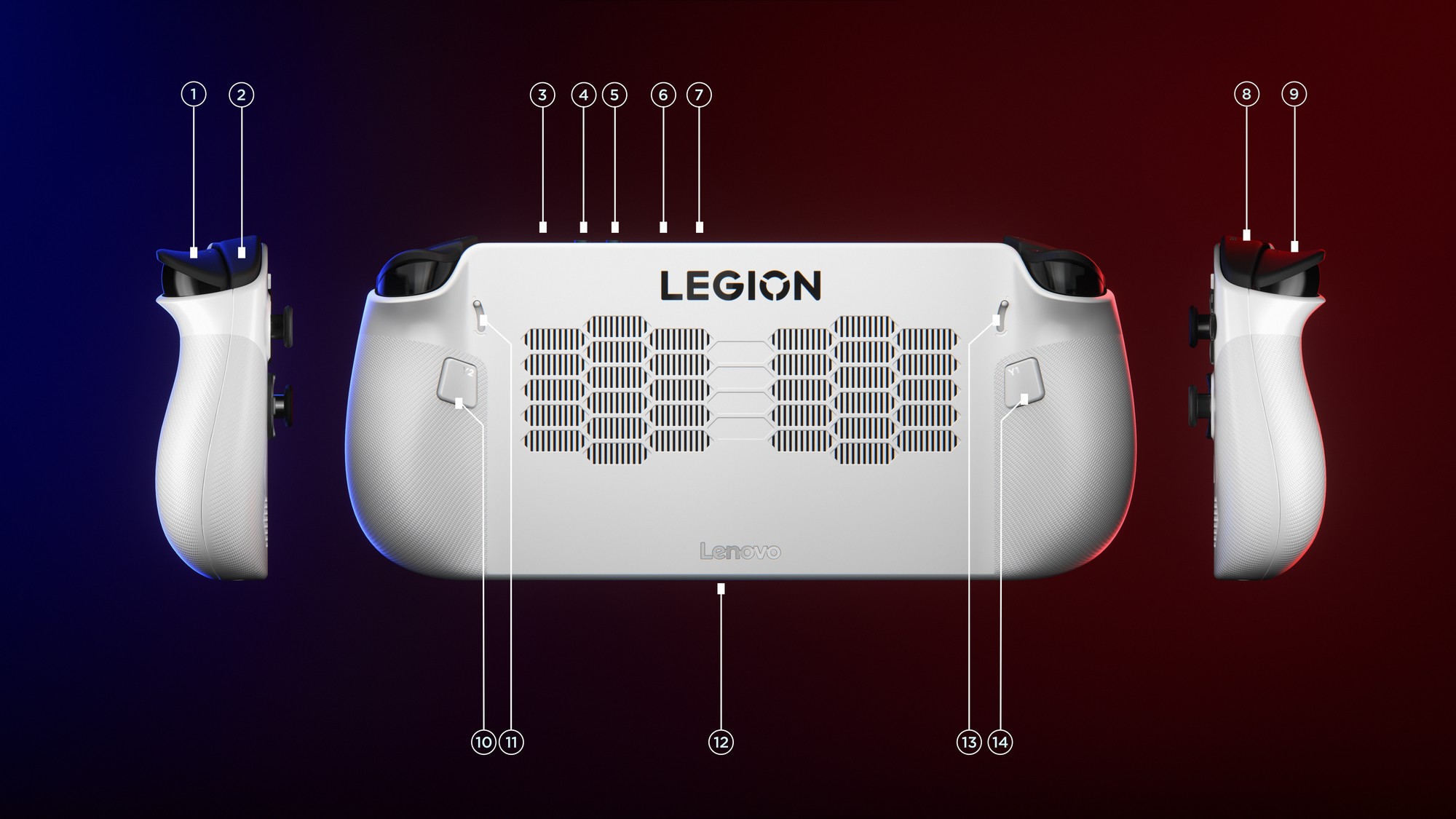
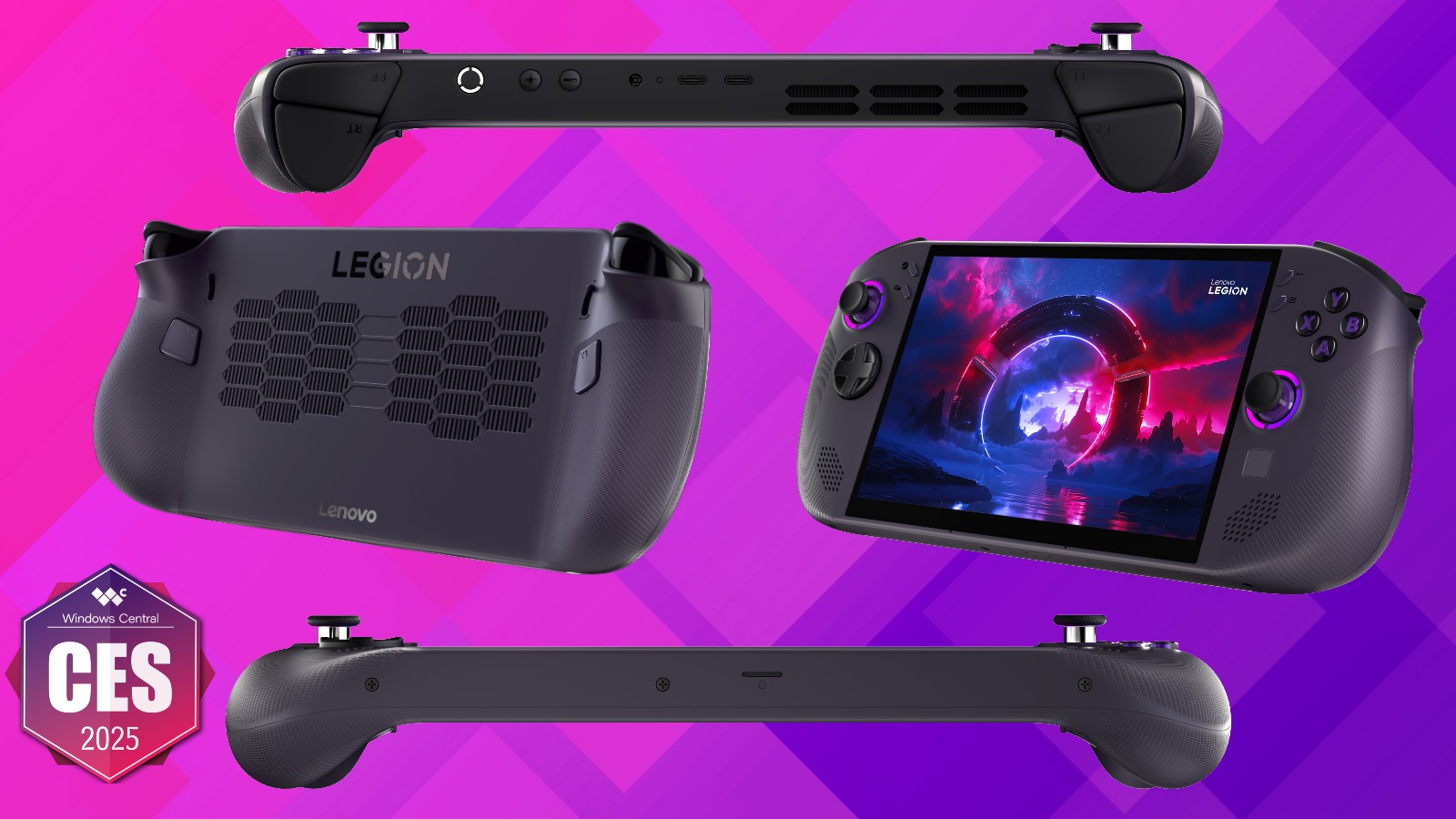
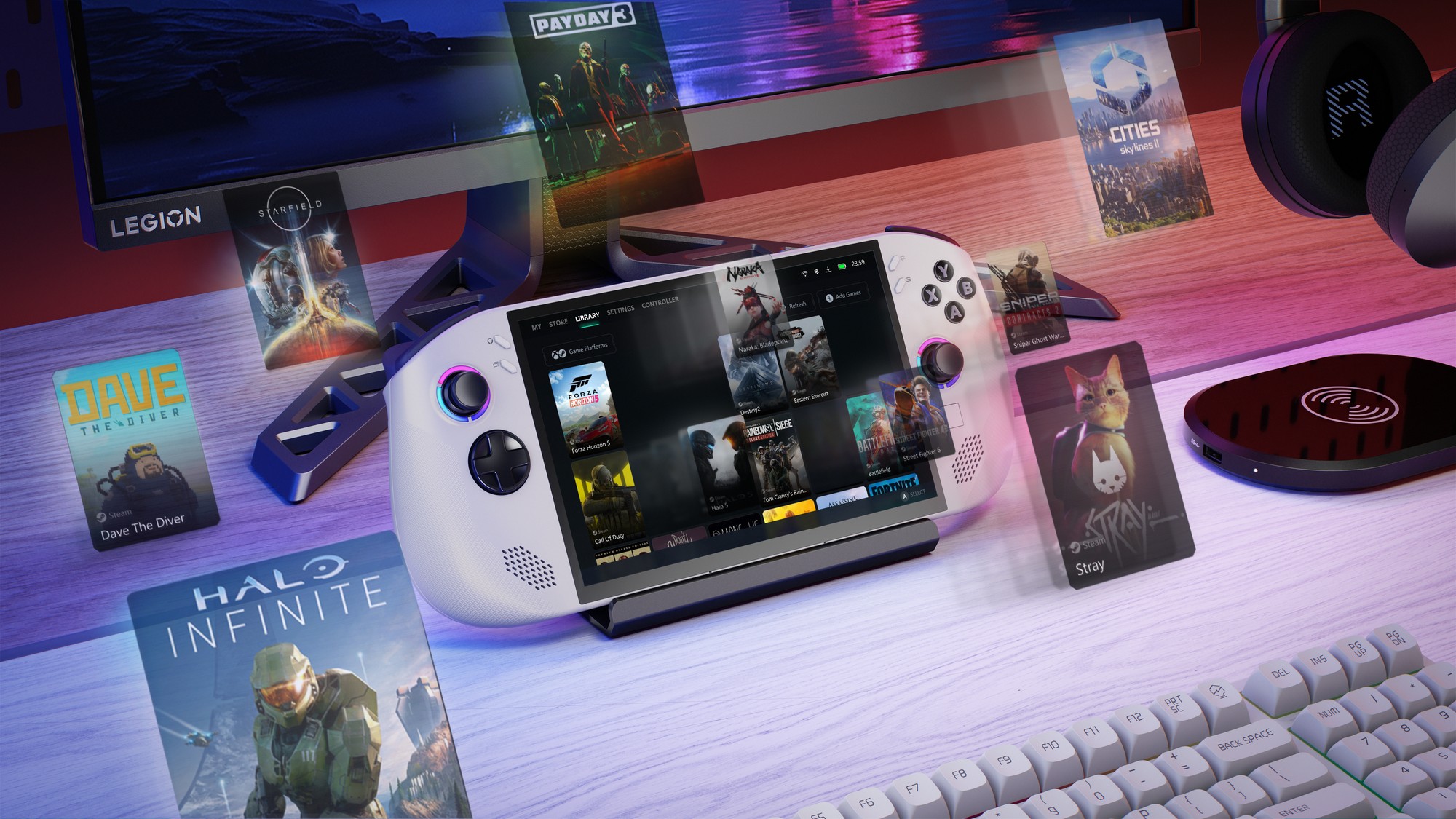
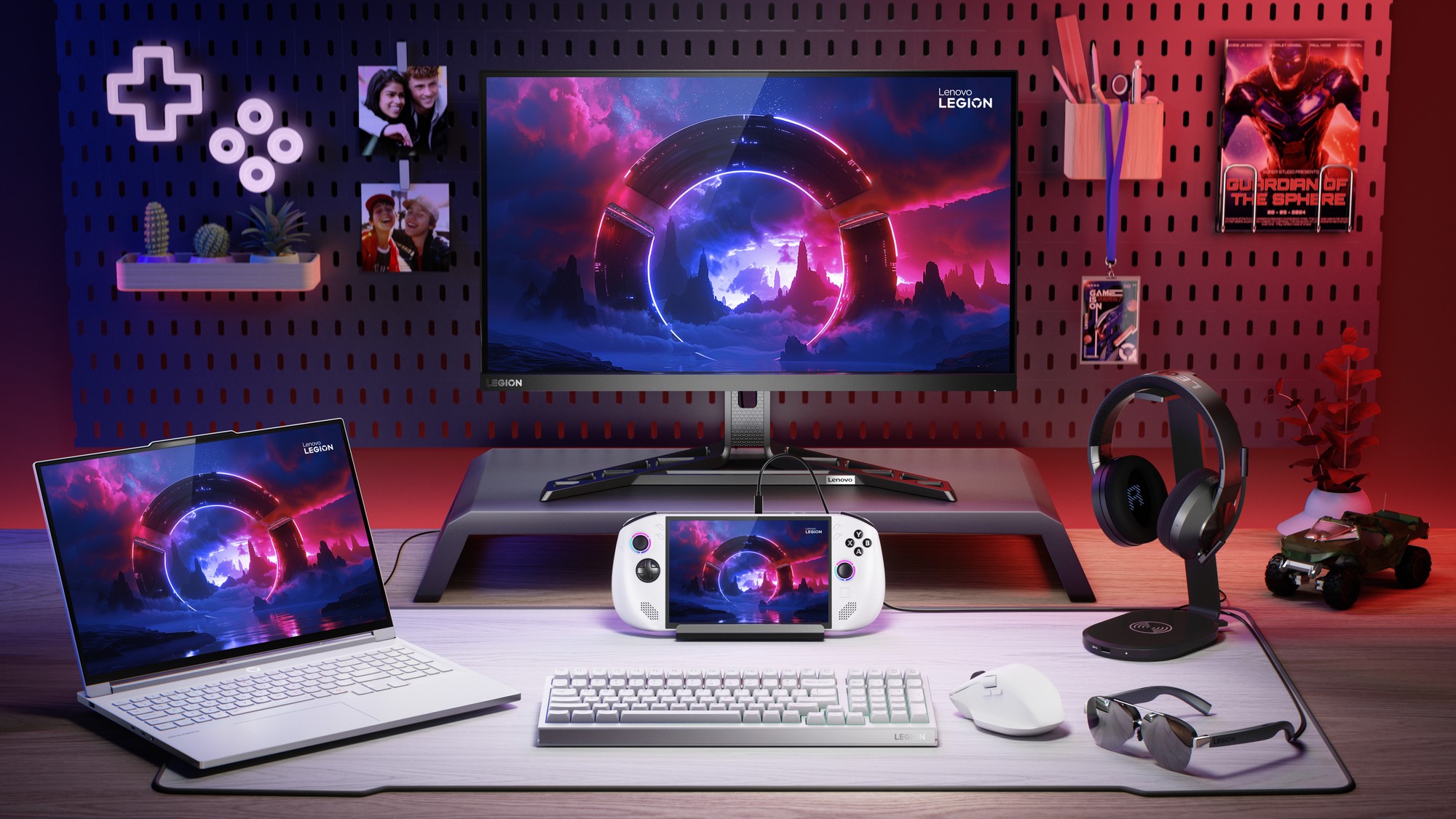
You also get two USB Type-C 4.0 ports, which greatly expands your connectivity options. I'm a big fan of this design, although you lose the versatility the Legion Go offers with its detachable controllers and built-in kickstand. The Lenovo Legion Go S will be available starting this month with an expected price of $729.99, but that'll be the more expensive configuration with the AMD Ryzen Z1 Extreme inside and running on Windows 11.
Yes, the standard Legion Go S runs Windows 11, like most other PC gaming handhelds, but Lenovo has another trick up its sleeve. Coming later this year, the Legion Go S will become the first officially licensed, third-party SteamOS gaming handheld. That's the exact same interface powering the Steam Deck, meaning gamers who prefer that OS will finally have a hardware alternative with more capable hardware inside.
The SteamOS version of the Legion Go S will don a violet chassis but otherwise will be identical to the standard Legion Go S. You'll lose the flexibility of Windows, but SteamOS is far more optimized for handhelds, so it's a more intuitive experience. The Lenovo Legion Go S with SteamOS is expected in May 2025 with a starting price of $499.99, with the Ryzen Z2 Go inside.
The SteamOS version of the Legion Go S will be around $100 less than the Windows-powered equivalent, depending on your region, and that's thanks to Windows' licensing fees. At around the same time, we should get a new entry-level Legion Go S with Windows for around $599.99, also powered by the Ryzen Z2 Go exclusive to Lenovo's handhelds.
Lenovo Legion Go owners can also expect a refreshed Legion Space software suite with new features and an improved interface, which is always great to see. The Lenovo Legion Go S looks and feels awesome, with a refined design and feature set, and the new Legion Space software is the icing on the cake. It's more modern, responsive, and intuitive, and that'll help a great deal when navigating awkward Windows.
A next-gen Legion Go on the horizon
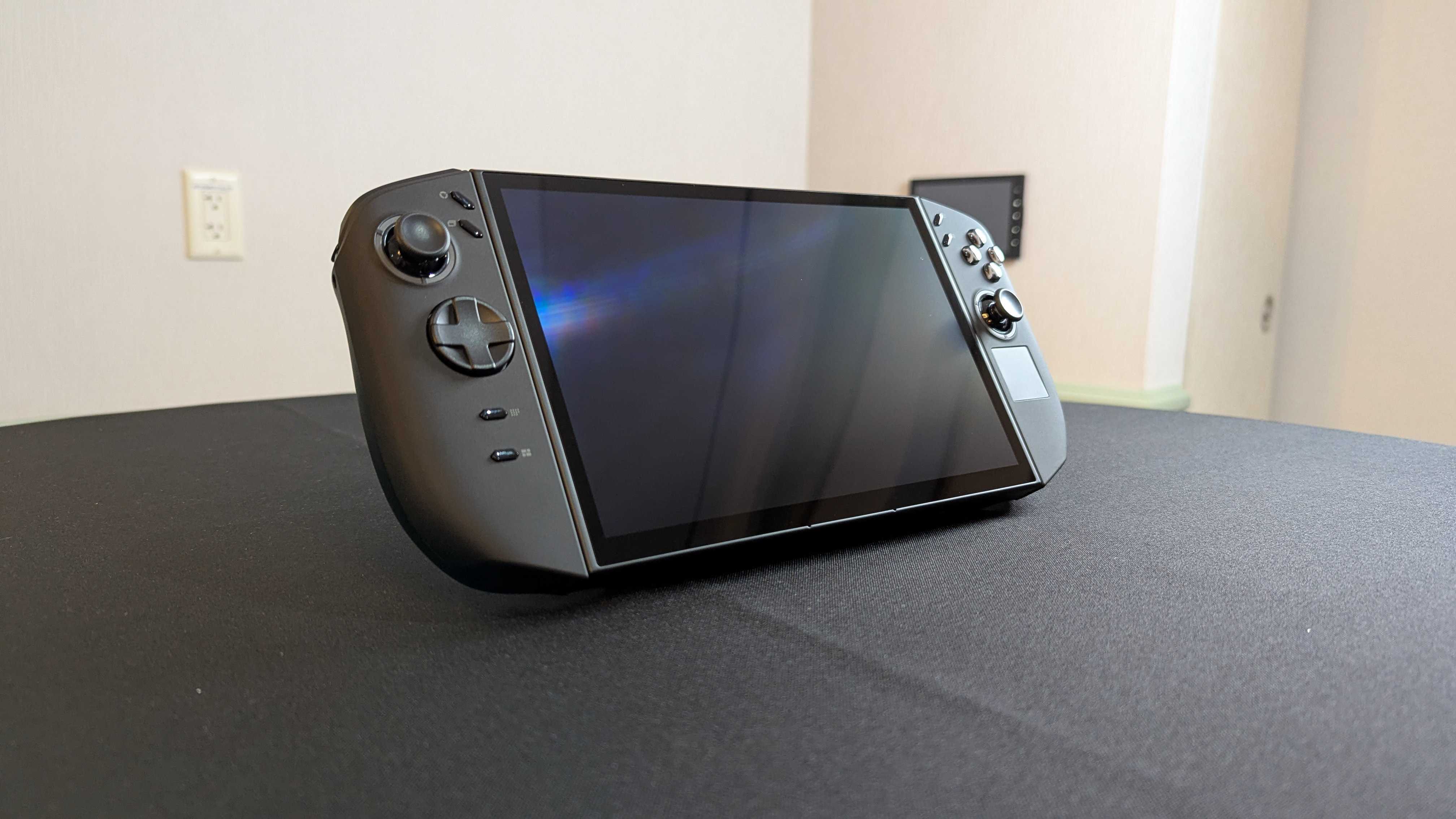
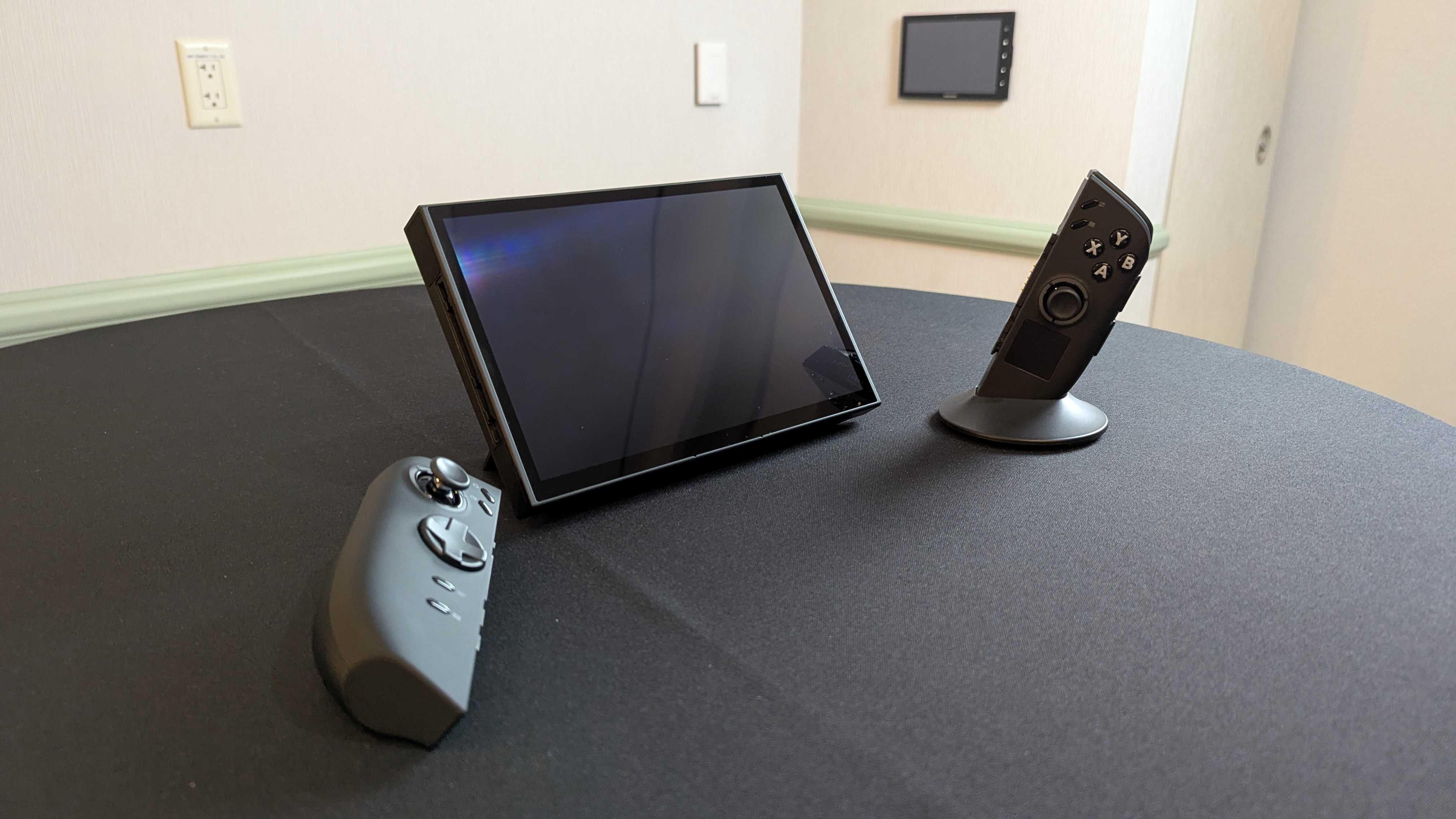
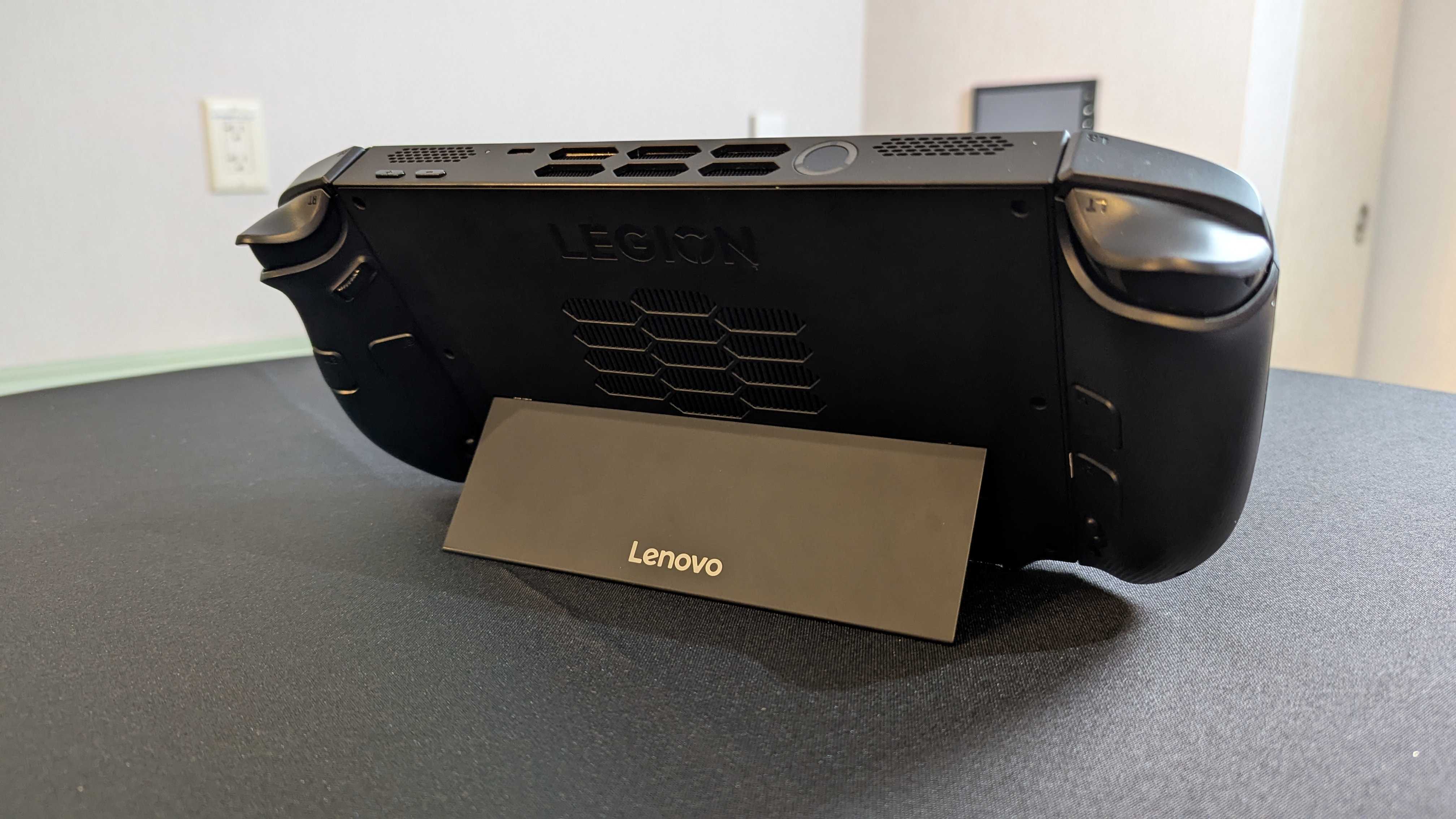
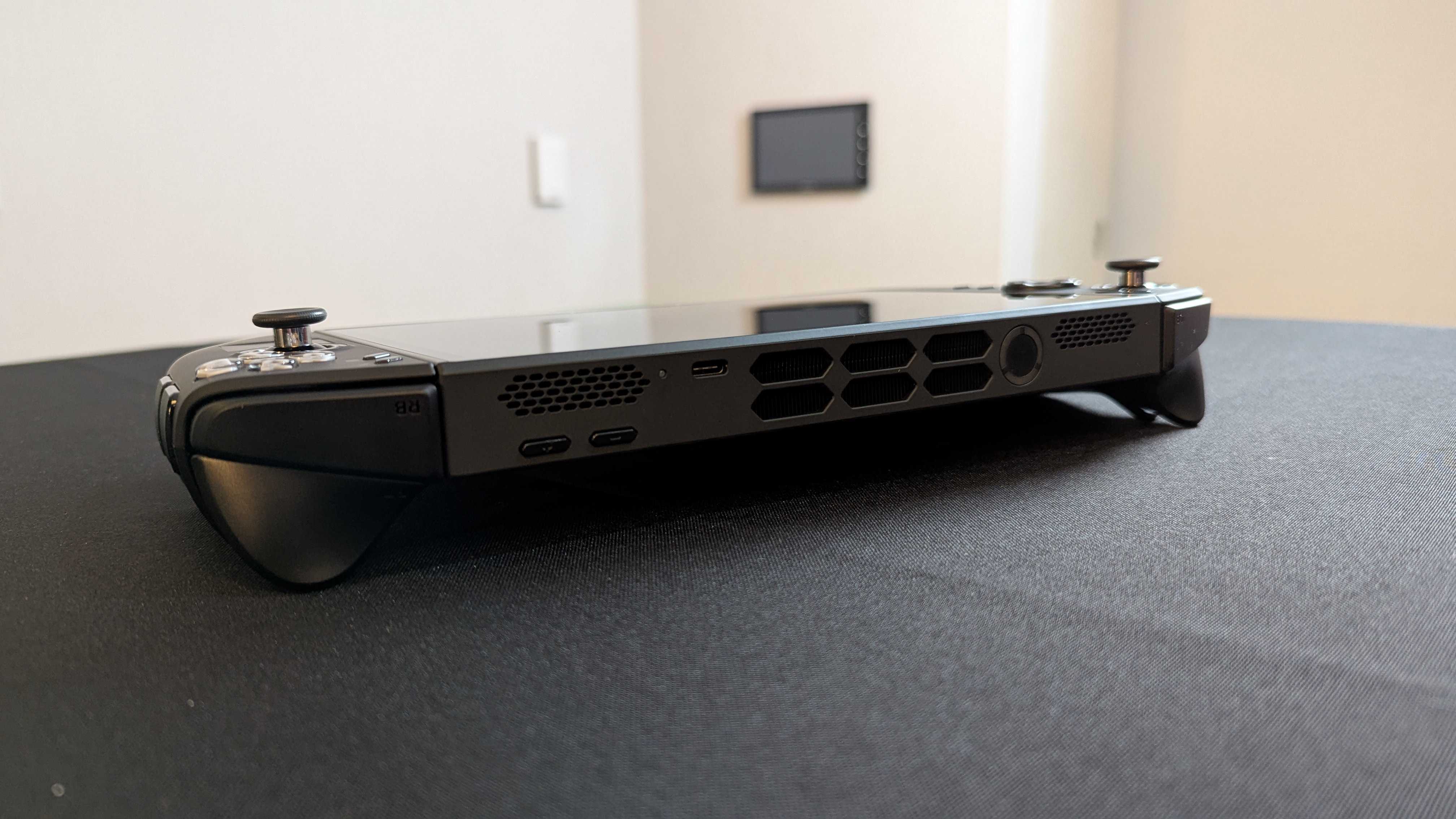
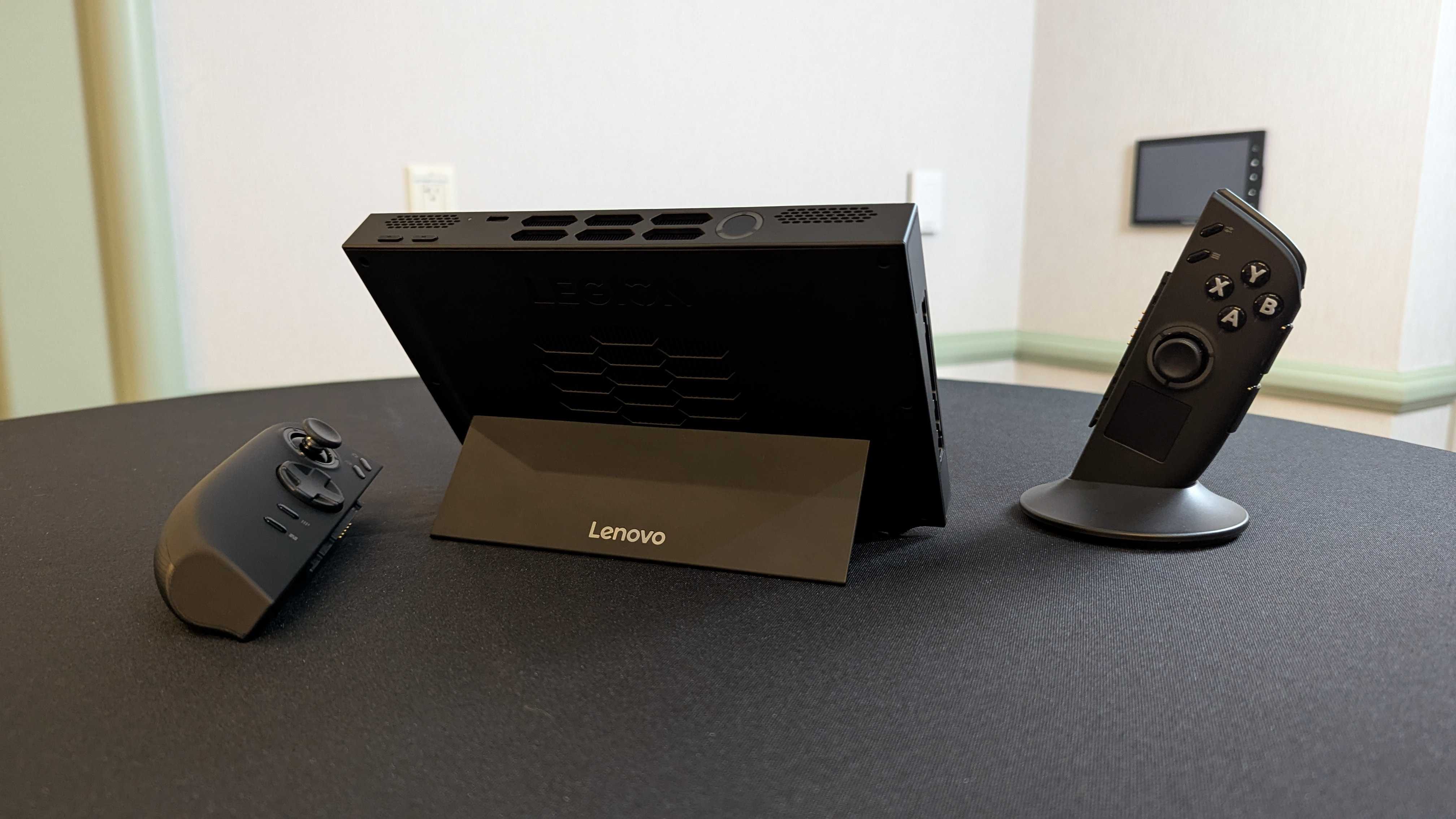
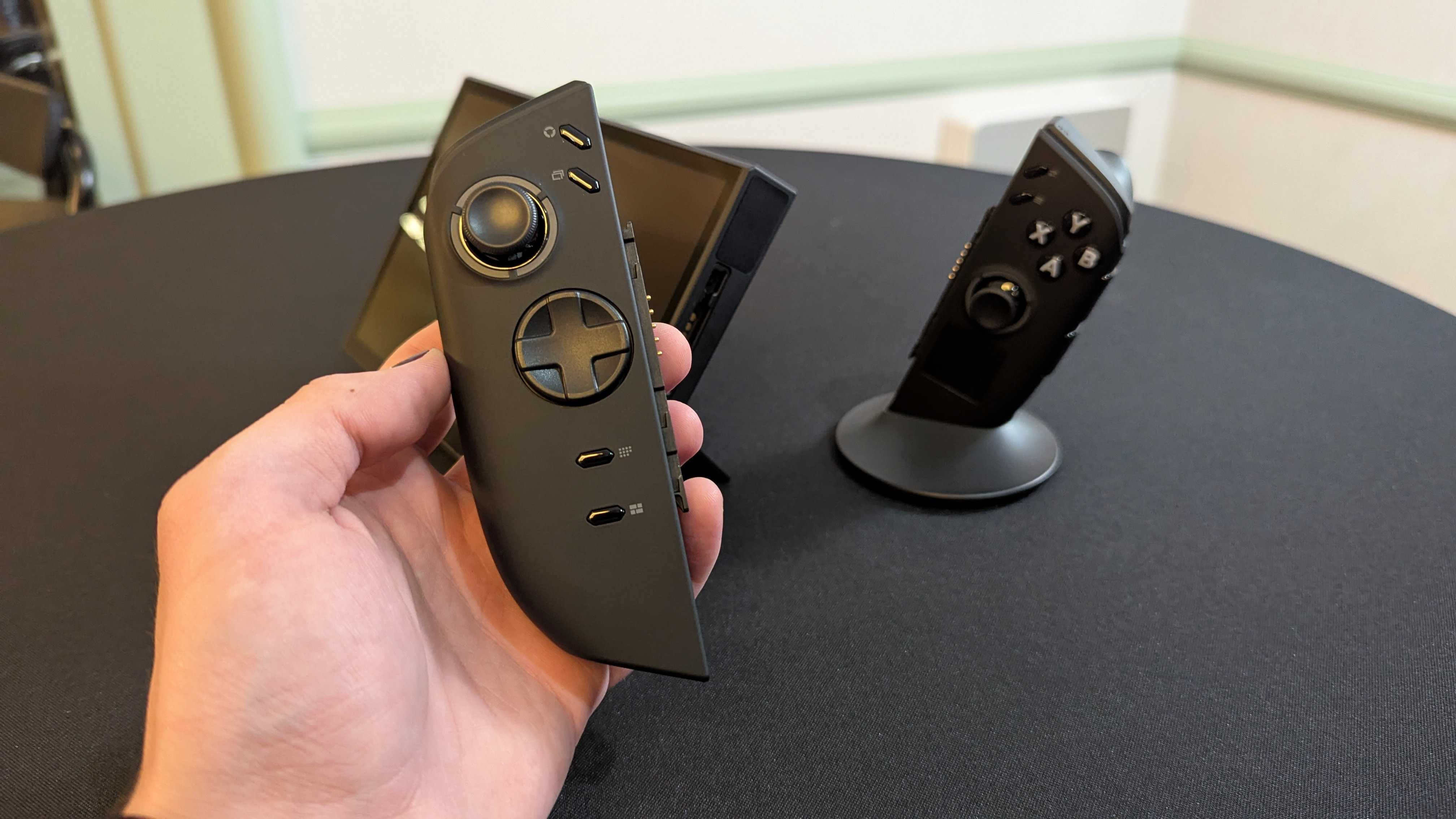
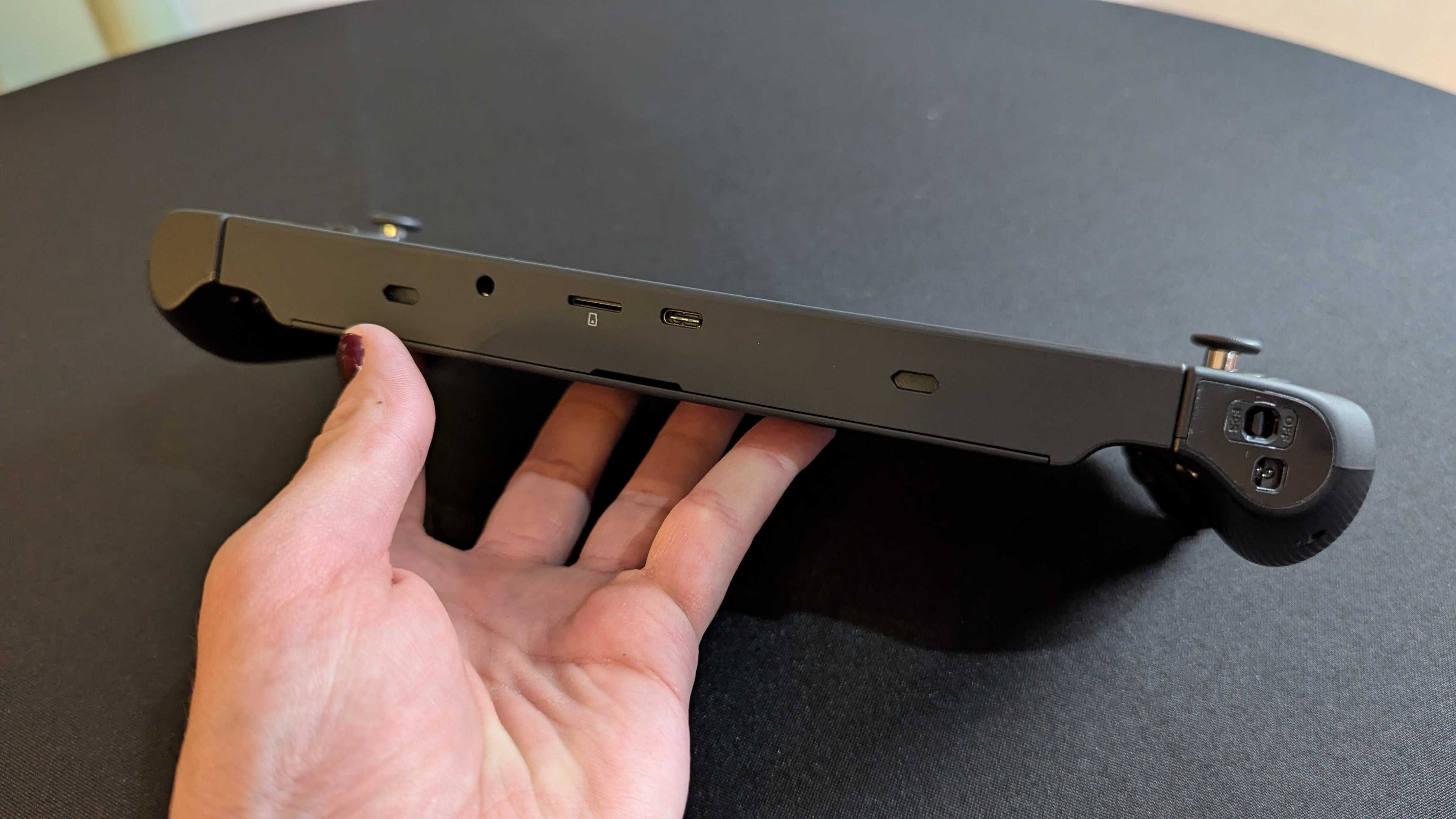
Alongside the Lenovo Legion Go S, Lenovo offered us a sneak peek at the future flagship of the handheld gaming line. The Lenovo Legion Go (Gen 2) doesn't have a release window or any pricing information yet, but we at least know more about the ultra-premium handheld's hardware and how Lenovo is planning to improve upon the Legion Go.
This will be for the gamers who can't give up the versatility of the first-gen Legion Go, as the next-gen upgrade will still boast the detachable controllers and built-in kickstand. Actually, Lenovo made major improvements to the ergonomics of those controllers. The big upgrade here is the display, though, which was already a highlight of the Legion Go.
Now, we're getting an 8.8-inch, 16:10 OLED display with VRR support, so we can expect the Legion Go (Gen 2) to offer one of the best visual experiences of any gaming handheld on the market. Powering that display will be the upcoming AMD Ryzen Z2 or Ryzen Z2 Extreme, which should hopefully lead to performance and efficiency gains versus the Ryzen Z1 platform we're used to.
You'll also be able to pair the Legion Go (Gen 2) with up to 32GB of RAM and 2TB of SSD storage. With the Ryzen Z2 Extreme and that 144Hz OLED display, it should be a monster for mobile PC gaming. We also expect it to be extremely expensive, but we'll have to wait longer to find out exactly how much it'll cost. The Lenovo Legion Go (Gen 2) we saw at CES 2025 was a prototype, after all. That aside, I'm super excited to see Lenovo invest in handheld gaming, and it's awesome to see SteamOS come to more hardware.

Zachary Boddy (They / Them) is a Staff Writer for Windows Central, primarily focused on covering the latest news in tech and gaming, the best Xbox and PC games, and the most interesting Windows and Xbox hardware. They have been gaming and writing for most of their life starting with the original Xbox, and started out as a freelancer for Windows Central and its sister sites in 2019. Now a full-fledged Staff Writer, Zachary has expanded from only writing about all things Minecraft to covering practically everything on which Windows Central is an expert, especially when it comes to Microsoft. You can find Zachary on Twitter @BoddyZachary.
-
HeyCori Ultimately, I think this signals the slow death of Windows based handhelds. Despite the recent addition of Lenovo, ASUS, and MSI, smaller manufacturers have been making Windows handhelds for years.Reply
You'd think that with the big boys stepping in, that would have prompted Nadella to do literally anything to improve Windows handhelds. Even something as basic as a launcher that sits on top of Windows (like Android) would have been helpful. Instead, many Windows handhelds still require attaching a physical keyboard during setup because there's no guarantee that the onscreen keyboard will work.
So I'm not surprised to see OEMs testing Steam because it provides a better user experience, and cheaper due to not having to license Windows. The second loser is Epic (and everyone else not named Steam) because now there's one less reason to buy games from another store. -
Lurking_Lurker_Lurks Funny how as right when people are talking about Microsoft considering licensing the Xbox OS for OEMs, Valve just immediately does it. If this is set to continue Valve might seriously disrupt the console market and that's been needed for a long time. Nintendo, Sony, and Xbox do need to wake up. Gaming has moved beyond their walled gardens. Xbox is currently the one closest to a more expansive and open ecosystem, but they also can't quite pick a lane. And hey, I'll be the first to admit that even I'm skeptical they can pull it off. An Xbox OEM could potentially be a massive mess and start to move Xbox "consoles" to the optimization and consistency hellscape on PC. I'm very interested in seeing how SteamOS does as it opens up to third party hardware.Reply -
Lurking_Lurker_Lurks Reply
I mean you said it yourself, Windows based handhelds have been around for years long before the current push: they aren't going away. This is the start of Valve really pushing SteamOS as an alternative gaming operating system, but SteamOS is still not windows. As stated it only has access to a singular storefront/launcher and doesn't support every game (even those on Steam). While it is expected that Valve will inevitably grow the list of supported games, they will never make that every game just due to compatibility issues with legacy software and licensing and what not. SteamOS currently still has issues with DRM and anticheat games.HeyCori said:Ultimately, I think this signals the slow death of Windows based handhelds. Despite the recent addition of Lenovo, ASUS, and MSI, smaller manufacturers have been making Windows handhelds for years.
Not everything has to be the death of something else. That's one thing I really hate seeing on the internet. The overexaggerated XYZ-killer. Even now I'm seeing a LOT of news articles titled that the Steam Deck is dead because of this. It's like people want to live in a monopoly. I see this as a good wave of healthy competition. Much needed healthy competition. It's not like an alternative to windows for gaming is new. Heck, current windows handheld users have been able to download Bazzite (which offers a SteamOS like experience) for the longest. As a gaming OS, Windows has been sitting on its laurels for the past well ever. They were the default only option for the most part and knew that. Microsoft hasn't really done anything to actually stay competitive in the space (even when they literally created a gaming platform in Xbox). Now Apple is pushing more for PC gaming support on MacOS and through SteamOS Valve is heralding gaming on Linux. The majority of gamers are still going to be on windows for a long time and every PC game will likely continue to support windows in a way they just don't or can't on other operating systems. Not to mention that the vast majority of benefits that people equate to PC gaming will continue to only be available on Windows and when it comes to non-gaming uses Windows will continue to offer users a lot as well. Part of the allure of a Windows handheld is that it's just a Windows PC and that makes it usable for work and play.
I think it's very telling that Microsoft sent an Xbox exec to this event specifically to be part of the PC gaming handheld discussions. There's probably a lot of internal conversations going on for how to keep Windows as the number 1 gaming PC OS for decades to come, and how to combat losing market share in this space. That's a very good thing. I also think that with how much cheaper the SteamOS license cost is and how that leads to much lower prices, we'll continue to see these SteamOS handhelds hit markets with a console like experience and a console like price, and I hope that means we'll similarly see disruption in the console market with gamers questioning why the value of their consoles have stagnated so much (Nintendo and Sony don't even offer free cloud saves). That's also a very good thing. It looks like we're set to see much needed competition in places that there hasn't been in the gaming industry. That'll hopefully make all these companies wake up and compete to give us more value and just in general a better experience. The MOST improvements I've ever seen to the Xbox App on PC came post Steam Deck as the Xbox App on PC tried to really benefit from the Windows handhelds coming out and offer a more intuitive experience. That's what I expect to see more of. -
HeyCori Reply
Keep in mind that Valve doesn't need to replace Windows for gaming, they just need to replace Windows for - specifically - handhelds. That can happen regardless of the Windows PC market. I'd even argue that it's better for Valve if the PC market stays the way it is. It's the best of both worlds for them. After all, Valve makes the majority of their money selling games on Windows, which in turns boosts their handheld ecosystem. And given that Epic's store is a very distant second, it's almost impossible to avoid Steam if you're a PC gamer. I imagine a regular consumer is going to take that into consideration when looking for a PC handheld. Unless someone is deeply invested in Epic/GoG, Windows based handhelds can easily become a niche, and niches aren't guaranteed to last. You said it yourself, Microsoft has not done anything to stay competitive in this space. I don't want to say it's a guarantee, but there's a lane there where Steam handhelds completely overtake the PC handheld market. And given Microsoft's track record with previous devices, they might not care as long as Steam users are buying games on Windows PCs. And I seriously doubt the Windows PC gaming market is going to be in trouble any time soon.Lurking_Lurker_Lurks said:I mean you said it yourself, Windows based handhelds have been around for years long before the current push: they aren't going away. This is the start of Valve really pushing SteamOS as an alternative gaming operating system, but SteamOS is still not windows. -
1078mac Reply
Except the PC Xbox app is still not very good and quite frankly a disappointment on handhelds. So while I agree MS knows they need to do something they are not iterating with urgency and have no clear strategy to share. That app should be universal everywhere including Linux and it should be the same interface used on Xbox. At this point they need to deliver a truly good and cohesive experience with zero excuses and it should be here yesterday, but it isn't.Lurking_Lurker_Lurks said:I mean you said it yourself, Windows based handhelds have been around for years long before the current push: they aren't going away. This is the start of Valve really pushing SteamOS as an alternative gaming operating system, but SteamOS is still not windows. As stated it only has access to a singular storefront/launcher and doesn't support every game (even those on Steam). While it is expected that Valve will inevitably grow the list of supported games, they will never make that every game just due to compatibility issues with legacy software and licensing and what not. SteamOS currently still has issues with DRM and anticheat games.
Not everything has to be the death of something else. That's one thing I really hate seeing on the internet. The overexaggerated XYZ-killer. Even now I'm seeing a LOT of news articles titled that the Steam Deck is dead because of this. It's like people want to live in a monopoly. I see this as a good wave of healthy competition. Much needed healthy competition. It's not like an alternative to windows for gaming is new. Heck, current windows handheld users have been able to download Bazzite (which offers a SteamOS like experience) for the longest. As a gaming OS, Windows has been sitting on its laurels for the past well ever. They were the default only option for the most part and knew that. Microsoft hasn't really done anything to actually stay competitive in the space (even when they literally created a gaming platform in Xbox). Now Apple is pushing more for PC gaming support on MacOS and through SteamOS Valve is heralding gaming on Linux. The majority of gamers are still going to be on windows for a long time and every PC game will likely continue to support windows in a way they just don't or can't on other operating systems. Not to mention that the vast majority of benefits that people equate to PC gaming will continue to only be available on Windows and when it comes to non-gaming uses Windows will continue to offer users a lot as well. Part of the allure of a Windows handheld is that it's just a Windows PC and that makes it usable for work and play.
I think it's very telling that Microsoft sent an Xbox exec to this event specifically to be part of the PC gaming handheld discussions. There's probably a lot of internal conversations going on for how to keep Windows as the number 1 gaming PC OS for decades to come, and how to combat losing market share in this space. That's a very good thing. I also think that with how much cheaper the SteamOS license cost is and how that leads to much lower prices, we'll continue to see these SteamOS handhelds hit markets with a console like experience and a console like price, and I hope that means we'll similarly see disruption in the console market with gamers questioning why the value of their consoles have stagnated so much (Nintendo and Sony don't even offer free cloud saves). That's also a very good thing. It looks like we're set to see much needed competition in places that there hasn't been in the gaming industry. That'll hopefully make all these companies wake up and compete to give us more value and just in general a better experience. The MOST improvements I've ever seen to the Xbox App on PC came post Steam Deck as the Xbox App on PC tried to really benefit from the Windows handhelds coming out and offer a more intuitive experience. That's what I expect to see more of. -
Lurking_Lurker_Lurks Reply
I agree on everything but I don't think a native Linux app is on the table and not sure why one would be. Unlike steam, Microsoft serves the interests of windows. In the past Phil Spencer has talked about bring Game Pass to other platforms and I think that's where it starts and stops and even then I think that's been rolled back to cloud gaming. I could certainly see a native Xbox Cloud Gaming app on Linux, but a native Xbox experience will probably if anything only come to windows devices because they can argue that as a method of keeping interest in Windows. Otherwise they'd be spending a LOT of resources to compete with storefronts that are far, far ahead on platforms they don't own or benefit from making more competitive.1078mac said:Except the PC Xbox app is still not very good and quite frankly a disappointment on handhelds. So while I agree MS knows they need to do something they are not iterating with urgency and have no clear strategy to share. That app should be universal everywhere including Linux and it should be the same interface used on Xbox. At this point they need to deliver a truly good and cohesive experience with zero excuses and it should be here yesterday, but it isn't.
The Xbox App on PC should've been leagues better decades ago, and maybe if it was Microsoft Gaming would move on to expanding their popular and competitive (hypothetically speaking) gaming launcher, store, and experience natively to MacOS and Linux. But we're not in that timeline. Instead we're in the one where the best we can hope for is promises for improvements because another company showed everyone how to do it right. That's not even me haming on my Microsoft. It's just the reality. They need to get their own house together first and it very much seems like that's all that's on their mind right now. We'll see where things go from there. I only really envision a native Xbox Launcher on Linux once they've hit market saturation on Windows and can't improve the app that much or get much more adoption on windows. -
Lurking_Lurker_Lurks Reply
Okay, so the same thing... both can coexist and compete with one another. Now if you're saying that a SteamOS license could become more popular For PC gaming handhelds specifically, probably tbh. At the end of the day it's cheaper and that's what matters most to manufactures. For purely gaming needs it gets enough of the job done. In either case, I don't see windows licenses never being used for handheld OEMs. They'll have their place for people want the full windows experience on a handheld. Now will production and sales go down... well, I mean they aren't high to begin with. To be honest it's less of a case of one becoming more popular than the other, and more one making the entire niche market mainstream and the other probably seeing success themselves regardless because of that. We started to see that with the Steam Deck and then so many big name brand companies building Windows Handhelds. And I wouldn't be surprised if this is how it continues with Valve being the most popular in the PC Handheld market and Microsoft just also benefiting from the market becoming any percent larger. Though that said it's still up in the air if it'll ever become truly mainstream. Decades later consoles still struggle in that regard (you ever sit down and think how the first iPhone came out after the first Xbox and now iPhone sales more in a year than Nintendo (the oldest console) can achieve in a lifetime even when said product breaks the milestone for best selling console ever?). That's not a dig on anything but just that how much the PC handheld market can grow is up in the air. Either way, I think there's room for success for multiple companies and ultimately both will benefit regardless of which OS has the greatest market share specifically on handhelds. The only thing I really disagree with is the idea that anything is an "XYZ killer". That buzz word gets thrown around too much and it's rather insulting to the nature of a healthy market and how we can benefit from them. Like it would not be to our benefit if either steamOS or Windows was the ONLY option for handhelds (we've already seen how much stagnation that leads to). Just like it would be godawful if any of those "Steam Deck killers" actually killed the competition and we were left with a monolith.HeyCori said:Keep in mind that Valve doesn't need to replace Windows for gaming, they just need to replace Windows for - specifically - handhelds. That can happen regardless of the Windows PC market. I'd even argue that it's better for Valve if the PC market stays the way it is. It's the best of both worlds for them. After all, Valve makes the majority of their money selling games on Windows, which in turns boosts their handheld ecosystem. And given that Epic's store is a very distant second, it's almost impossible to avoid Steam if you're a PC gamer. I imagine a regular consumer is going to take that into consideration when looking for a PC handheld. Unless someone is deeply invested in Epic/GoG, Windows based handhelds can easily become a niche, and niches aren't guaranteed to last. You said it yourself, Microsoft has not done anything to stay competitive in this space. I don't want to say it's a guarantee, but there's a lane there where Steam handhelds completely overtake the PC handheld market. And given Microsoft's track record with previous devices, they might not care as long as Steam users are buying games on Windows PCs. And I seriously doubt the Windows PC gaming market is going to be in trouble any time soon.
